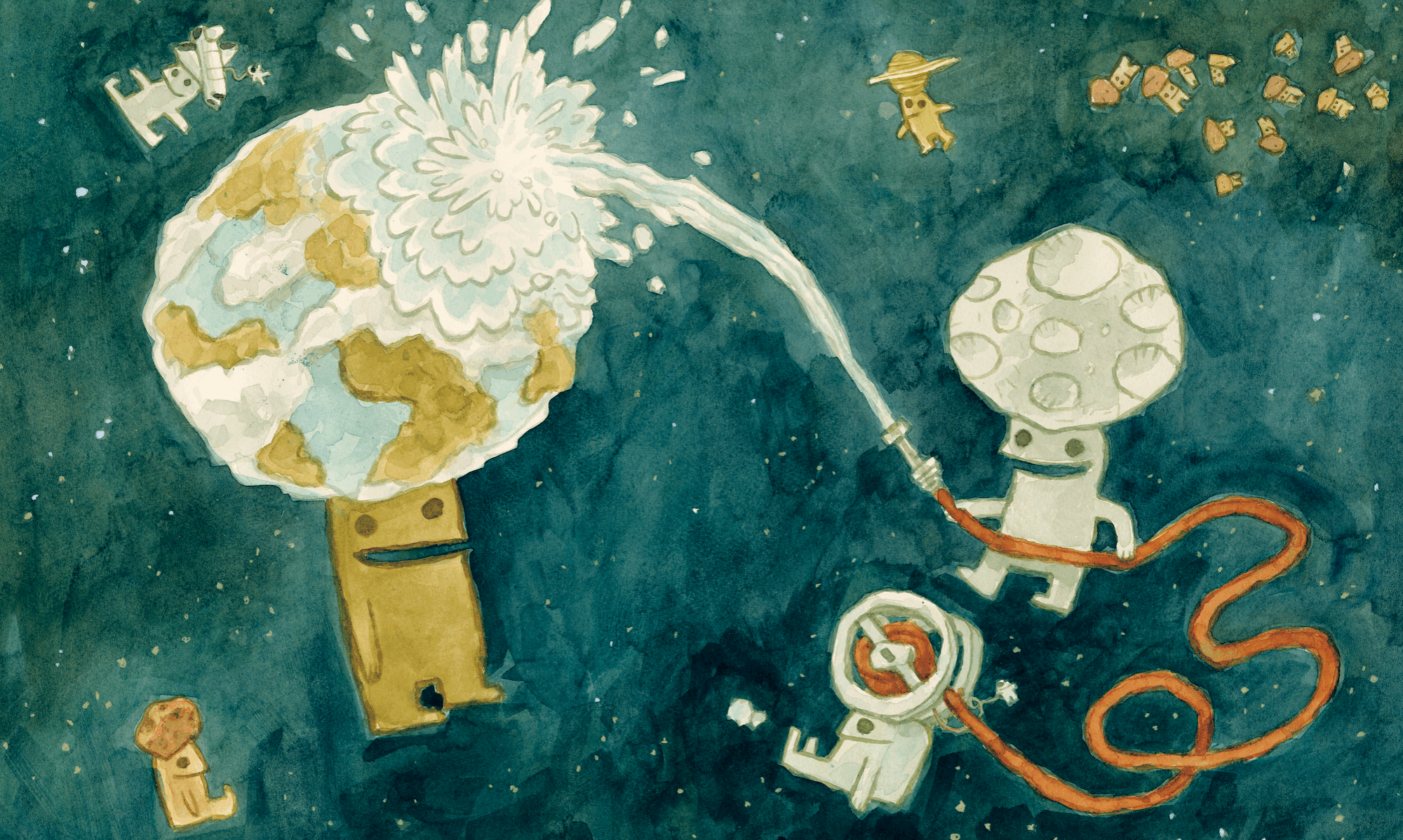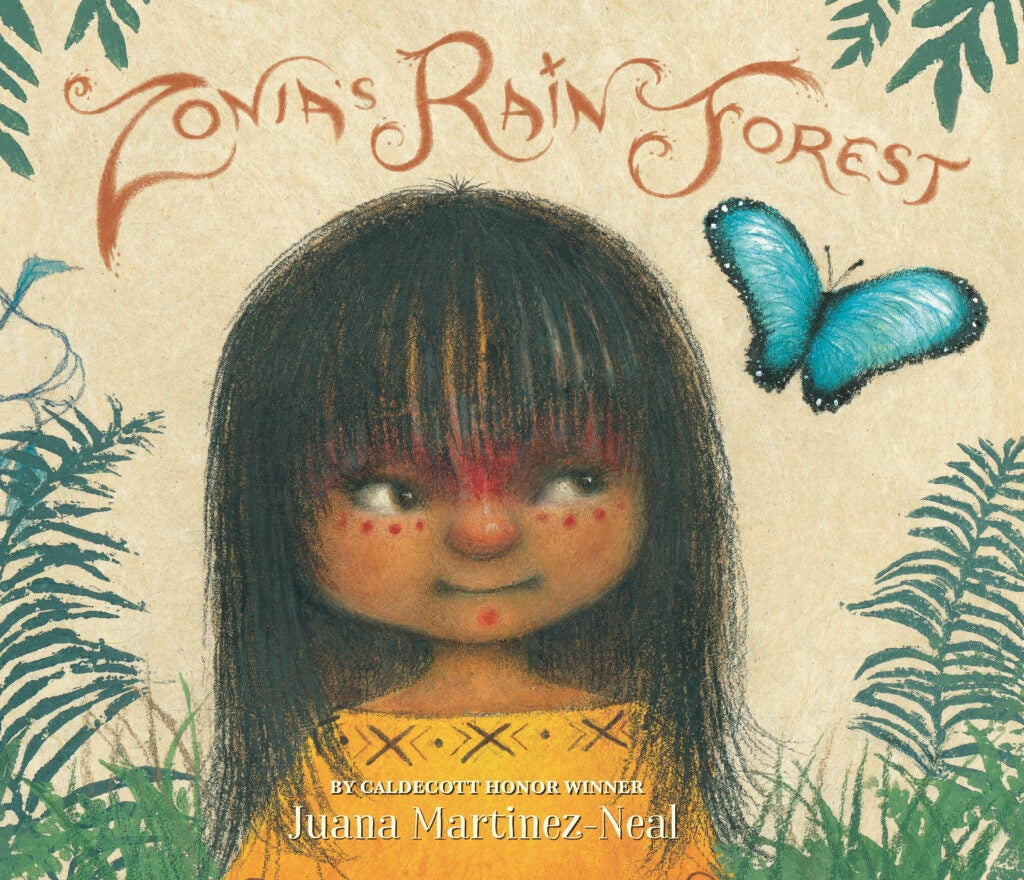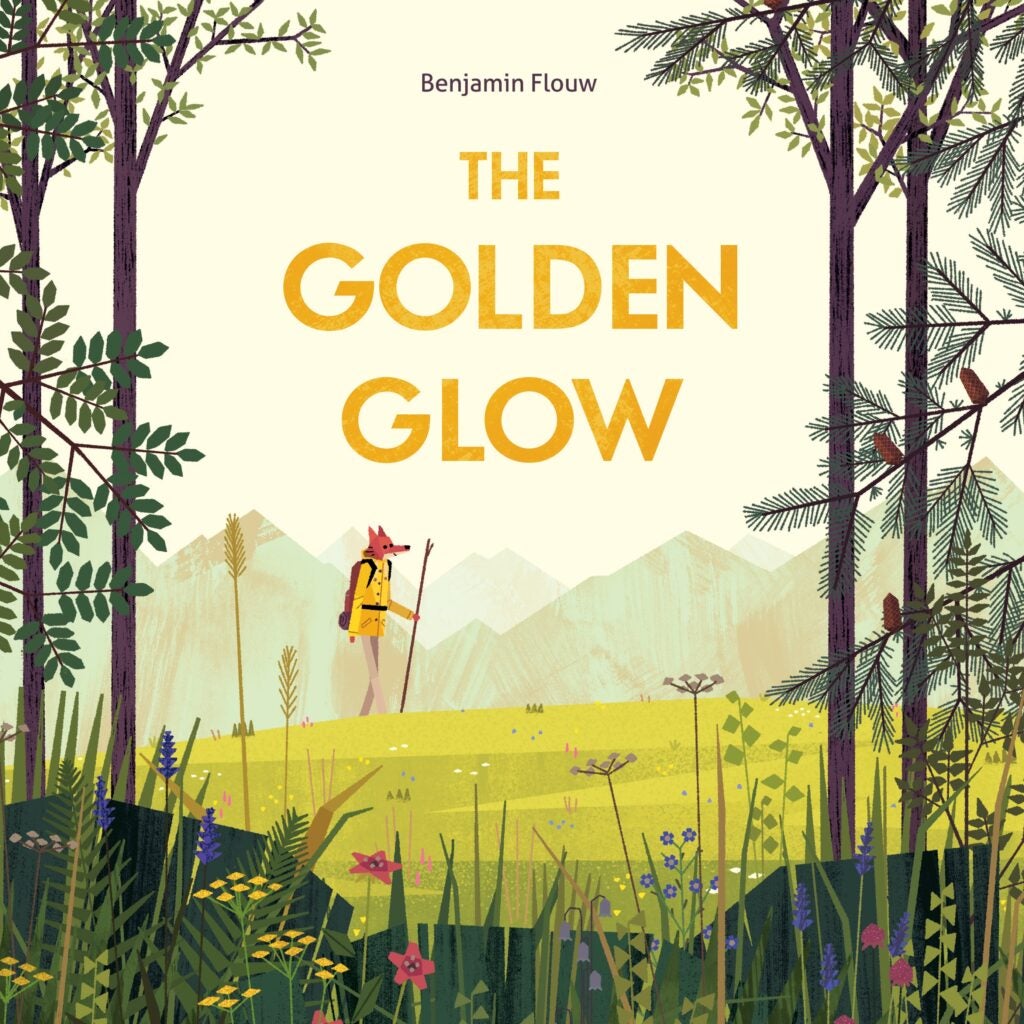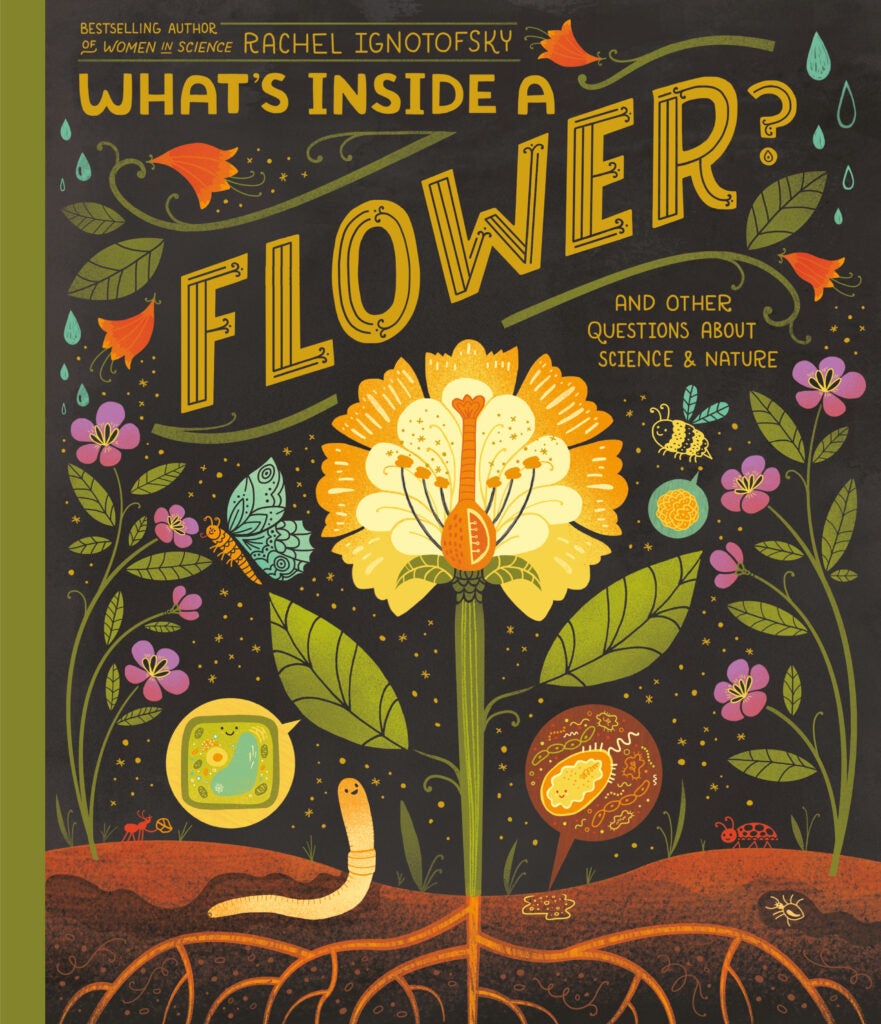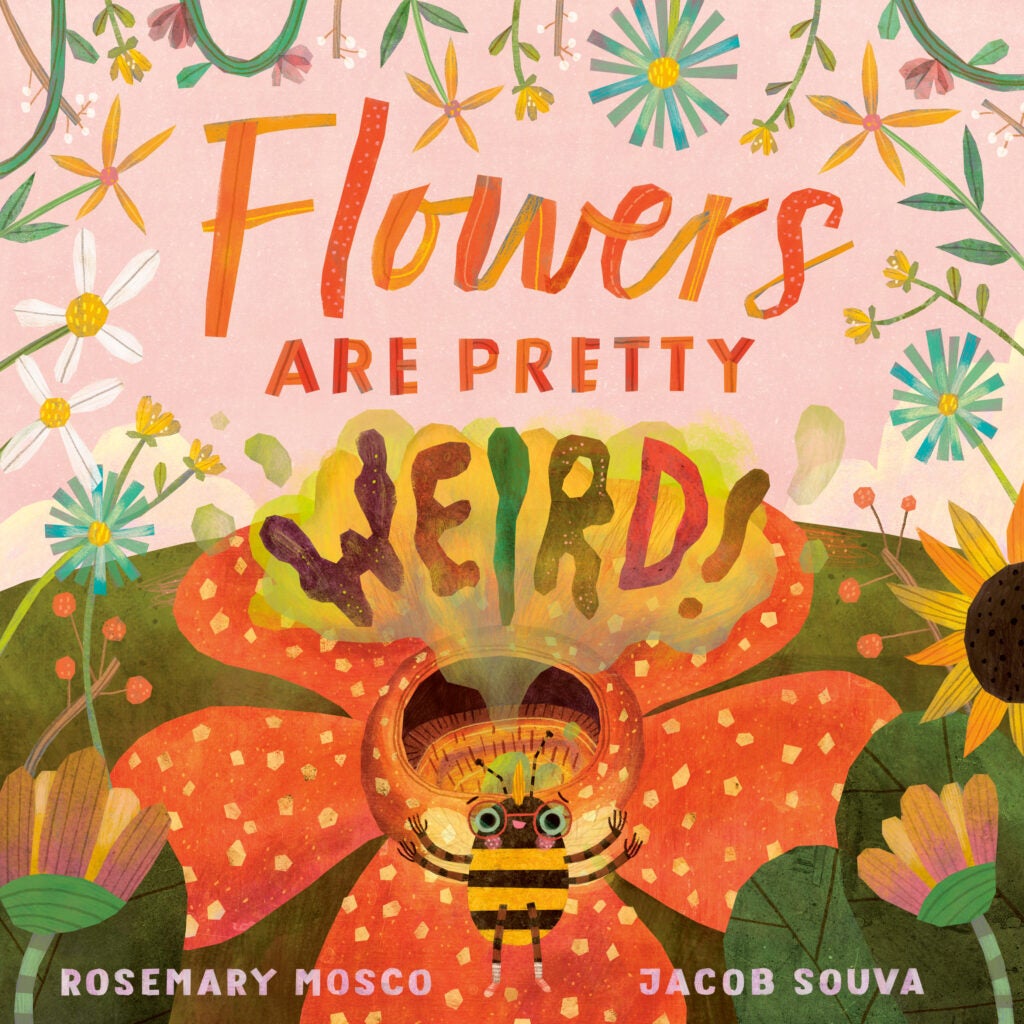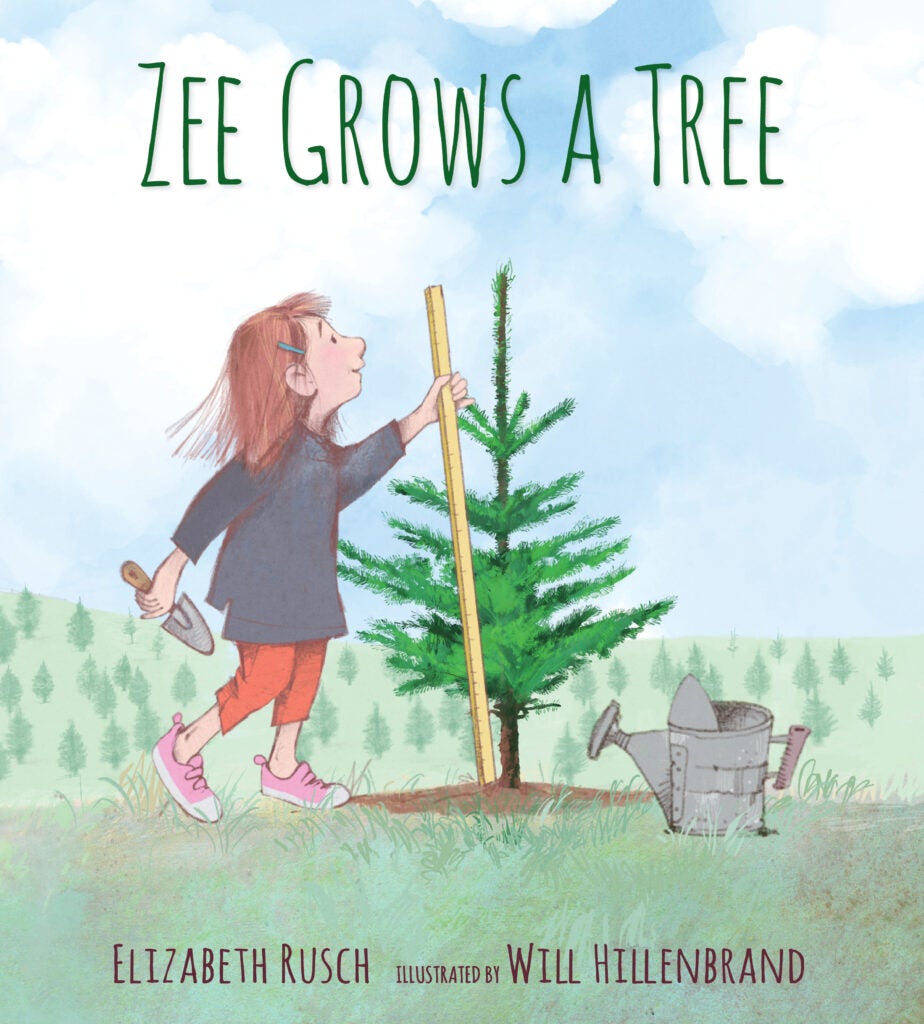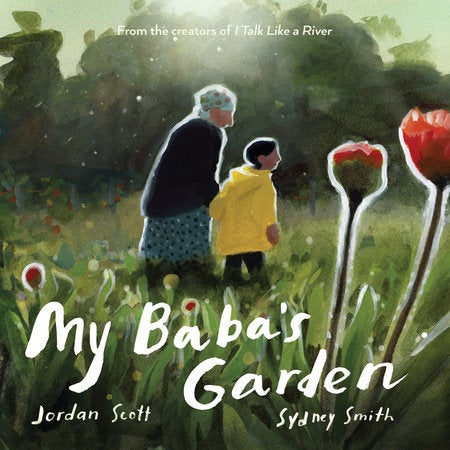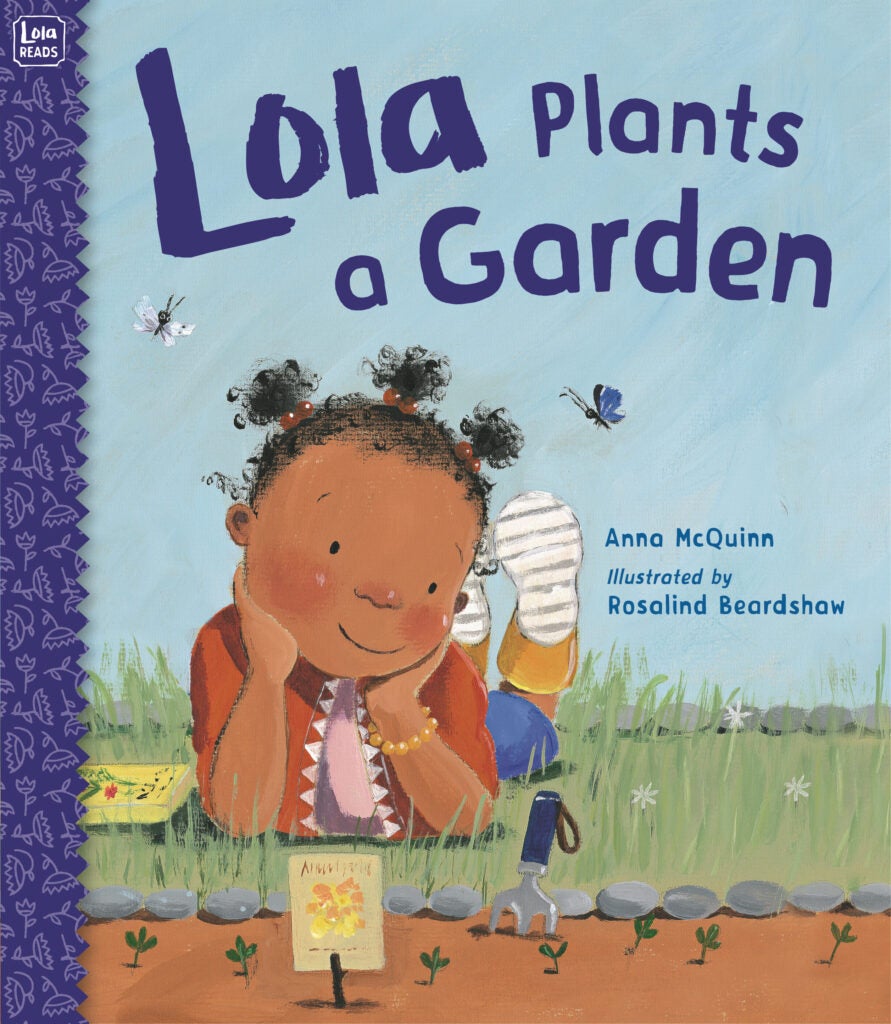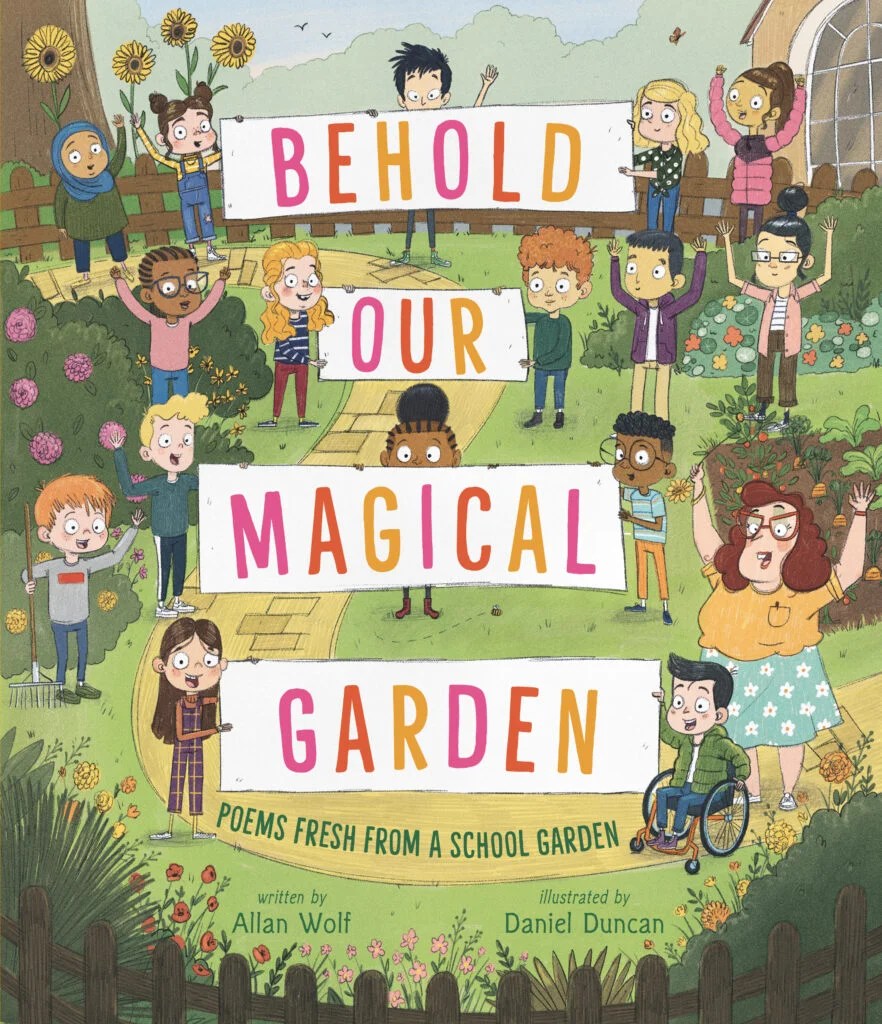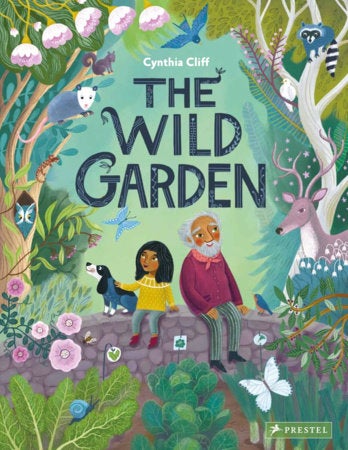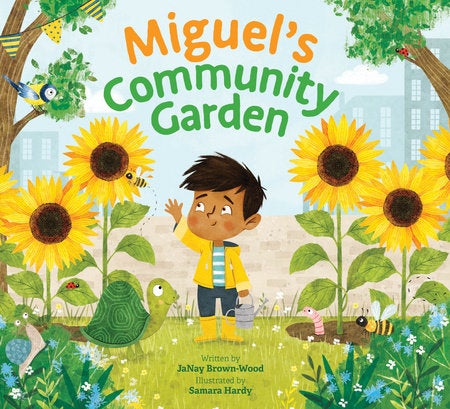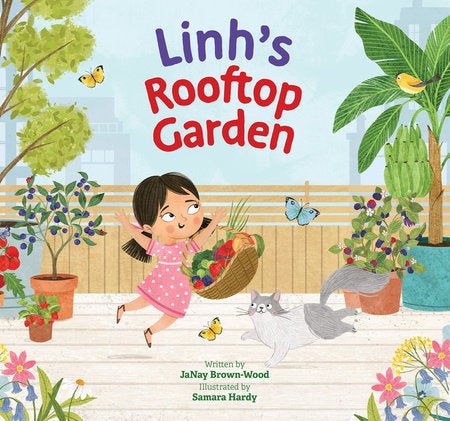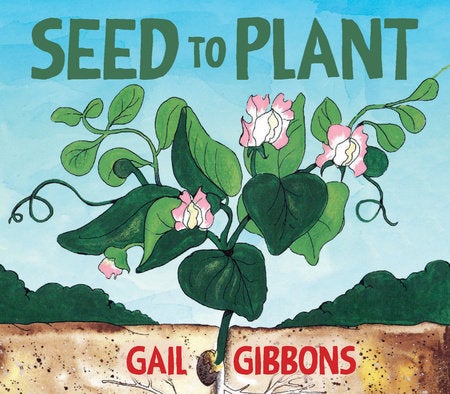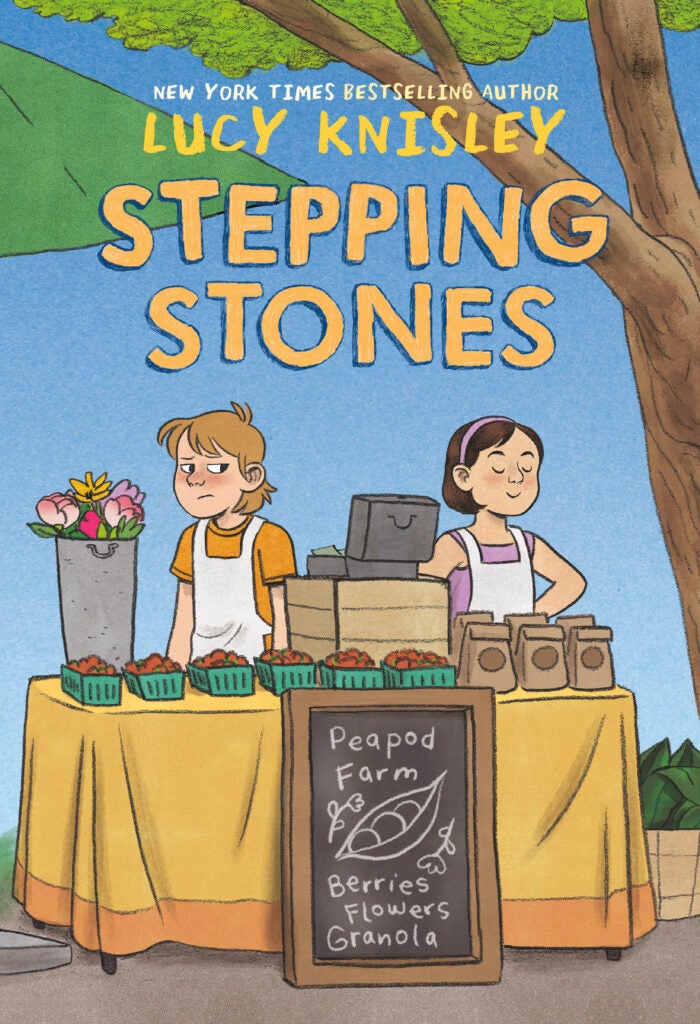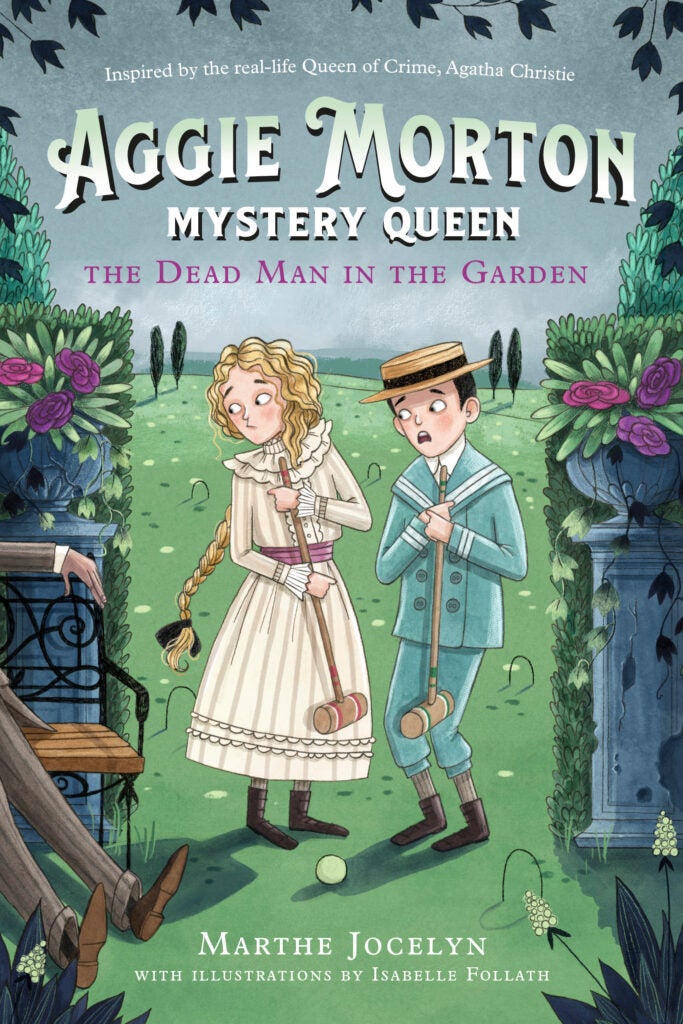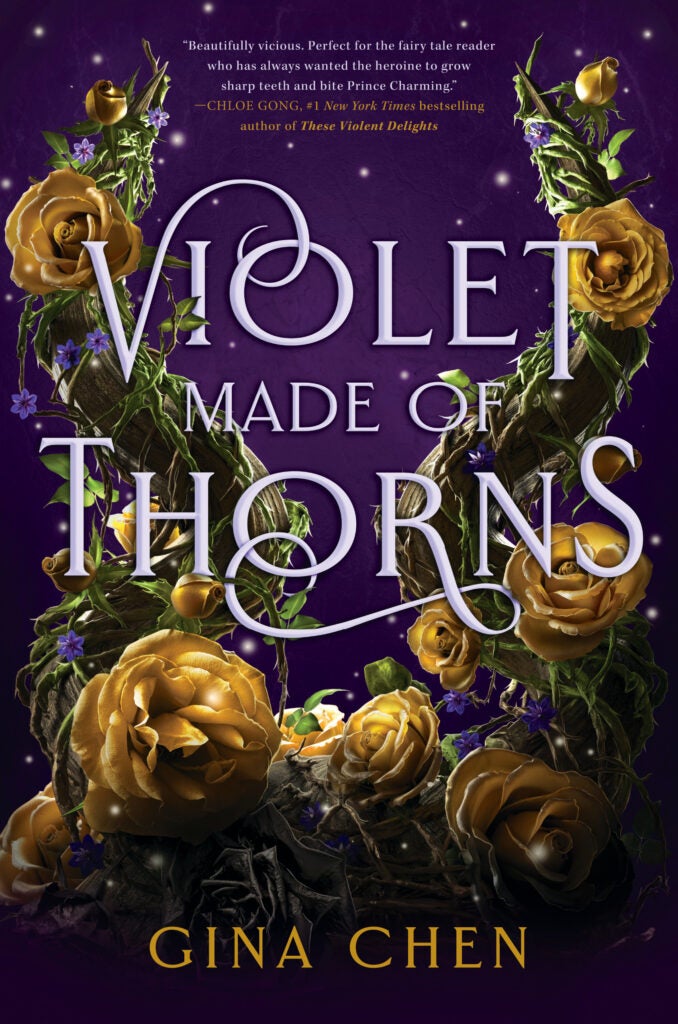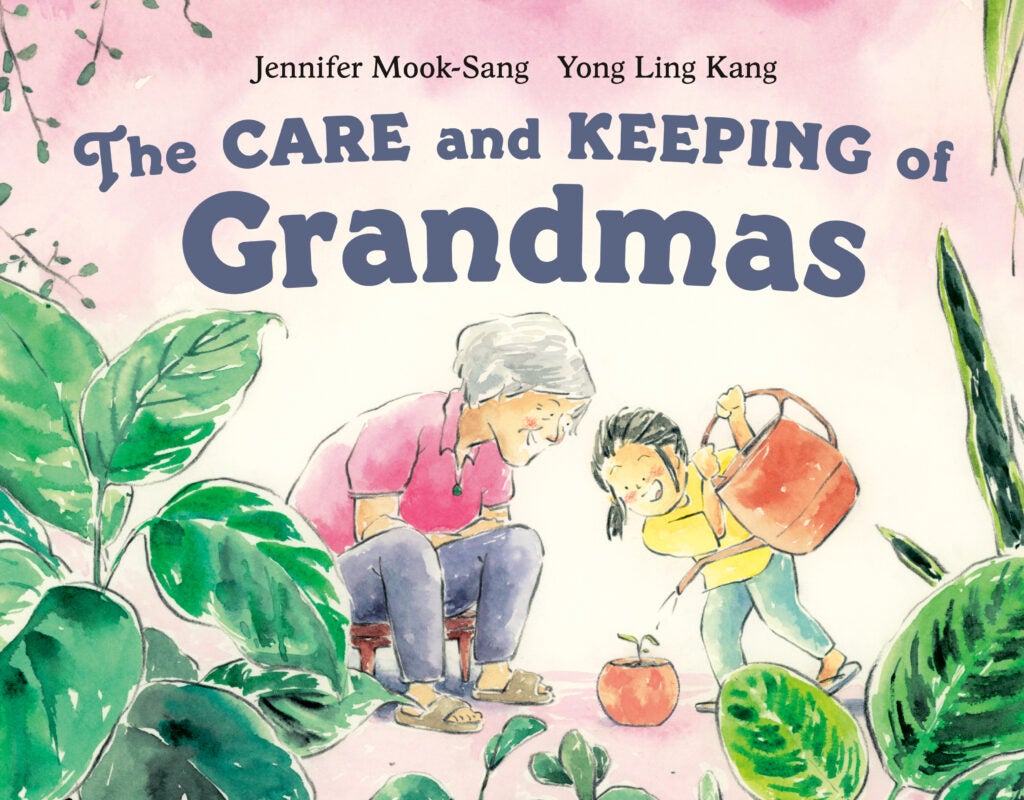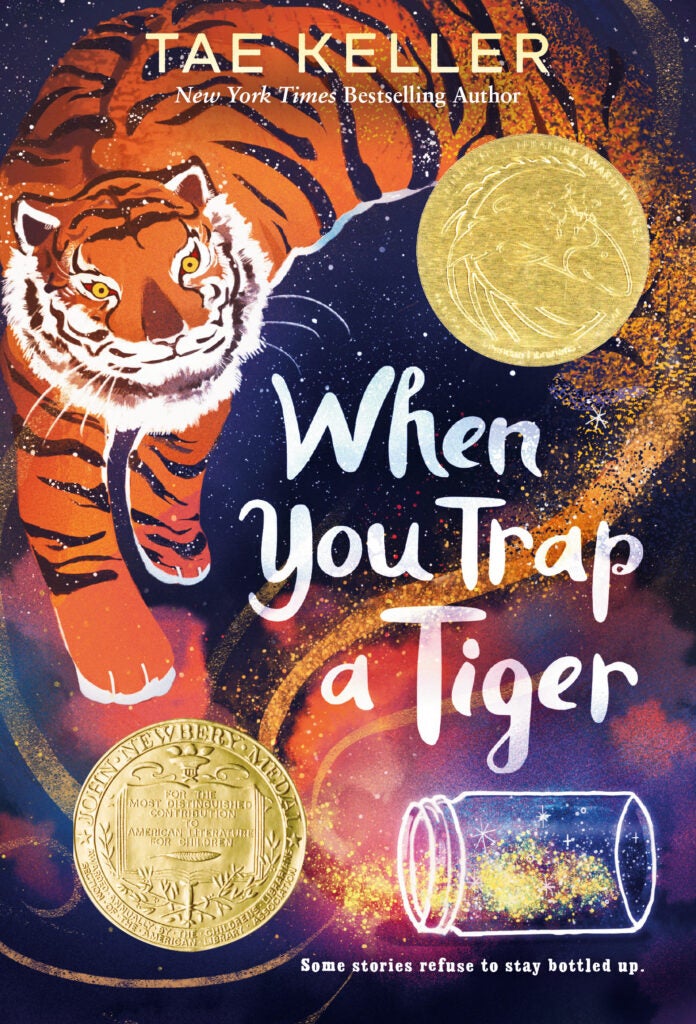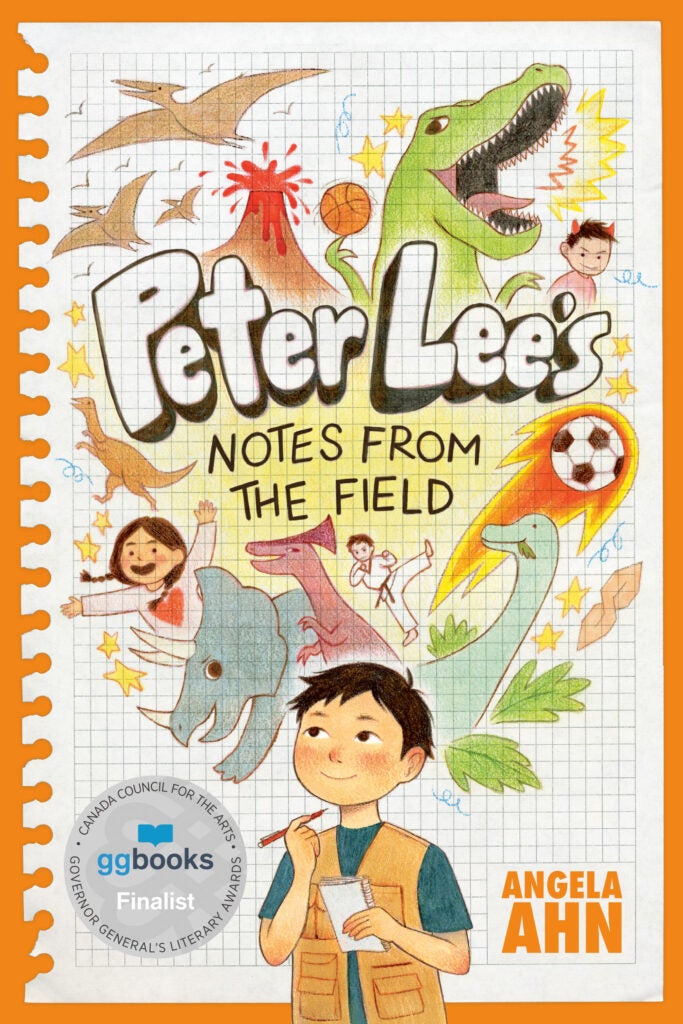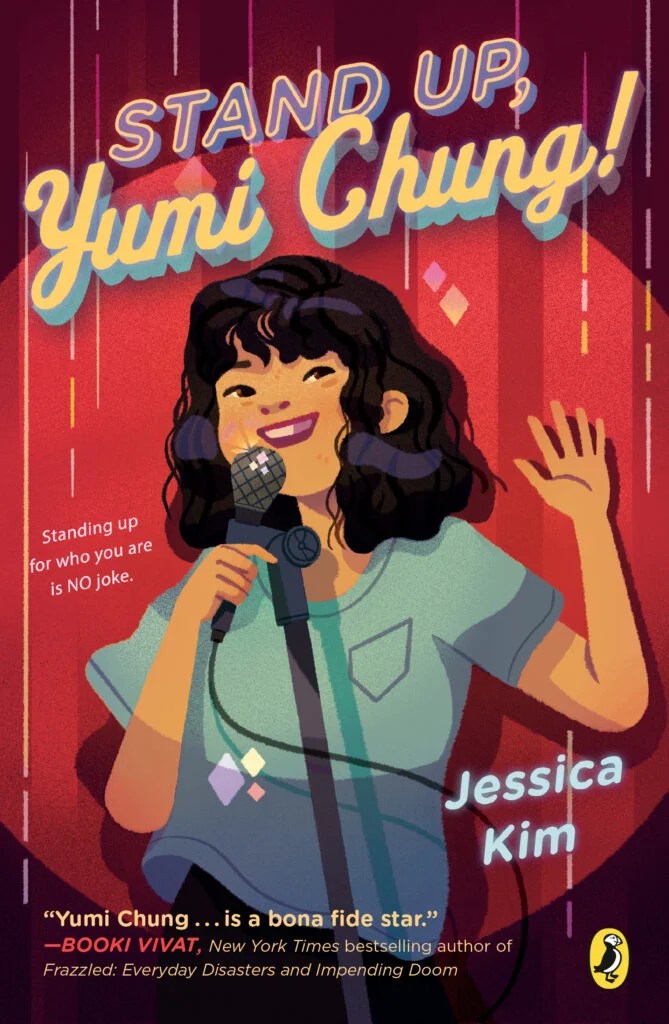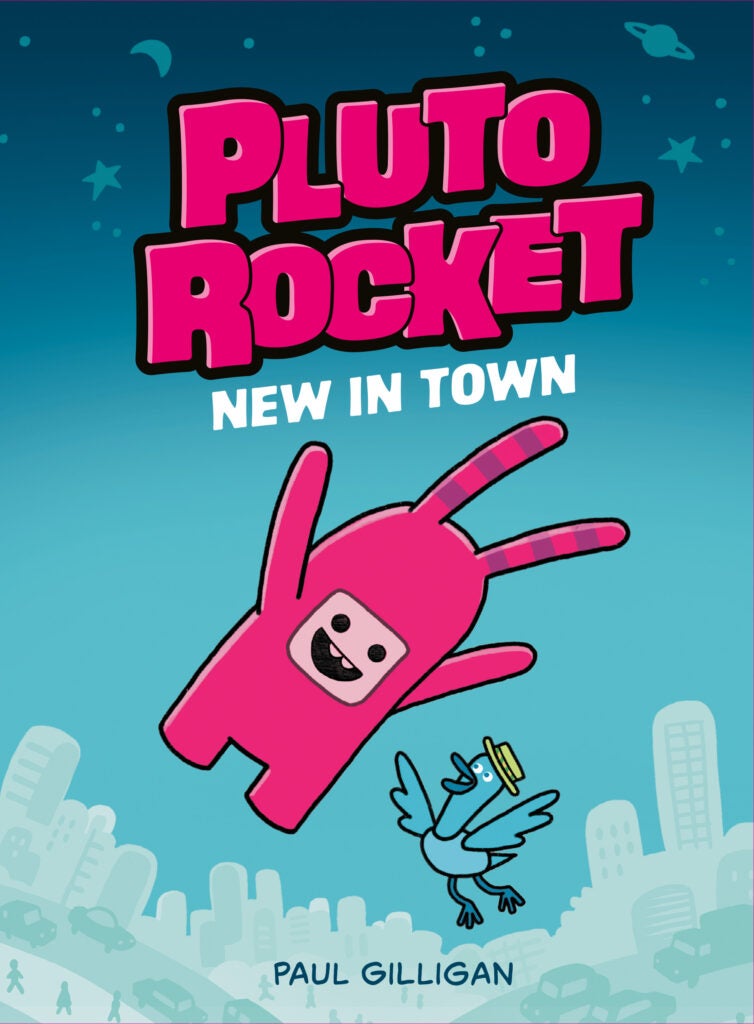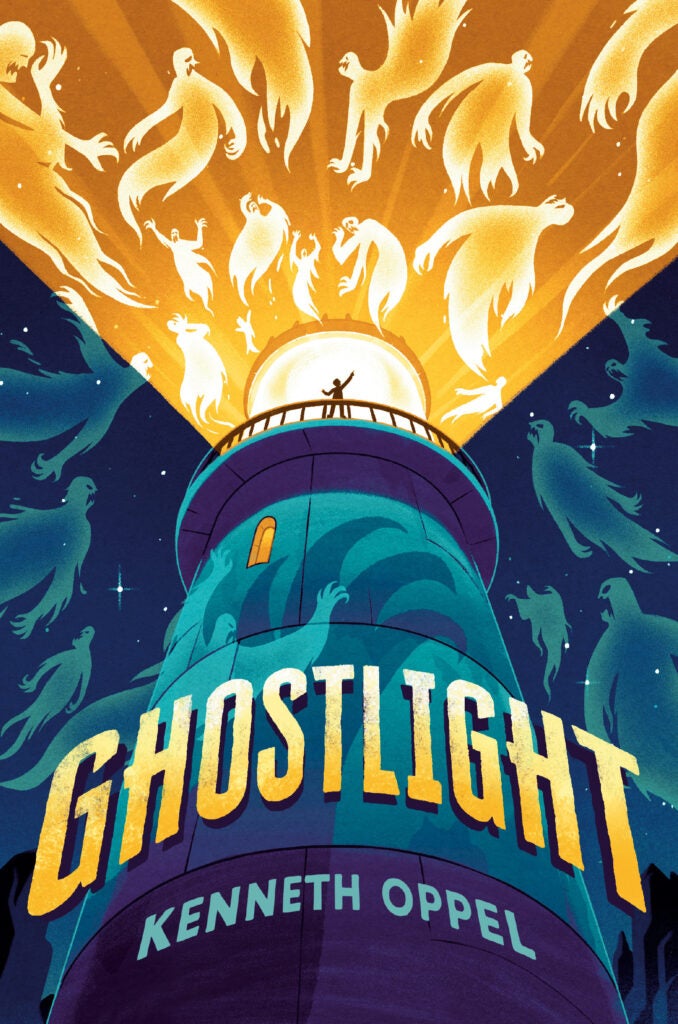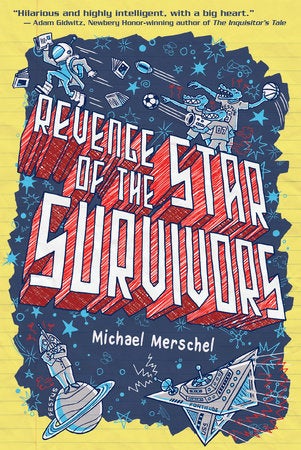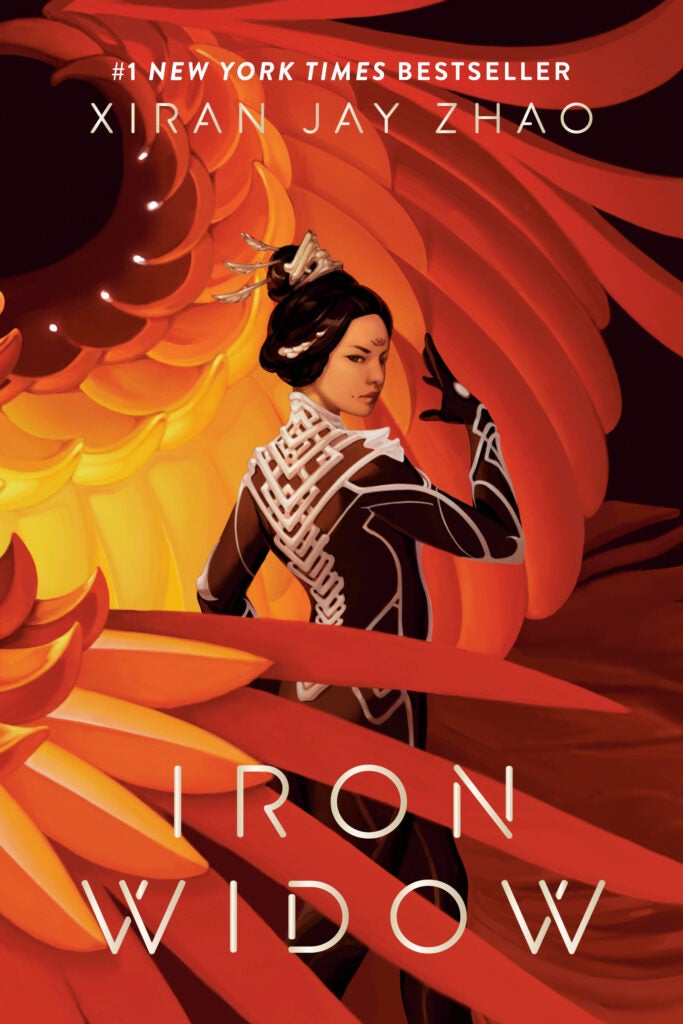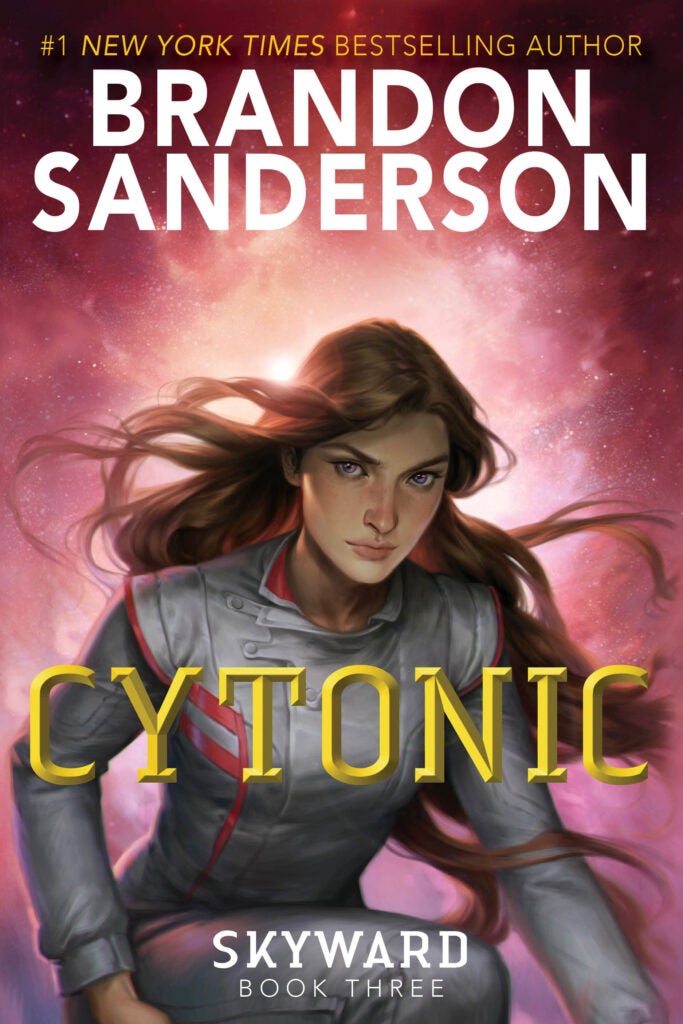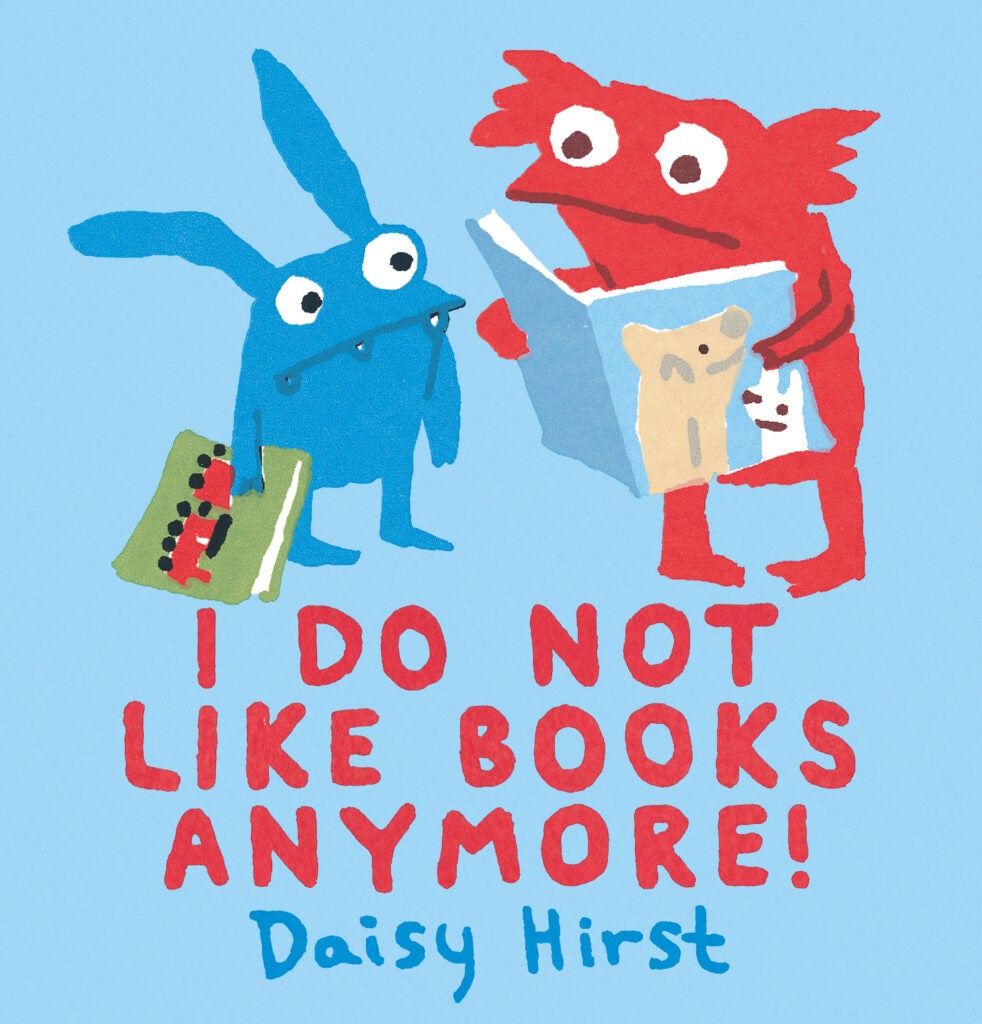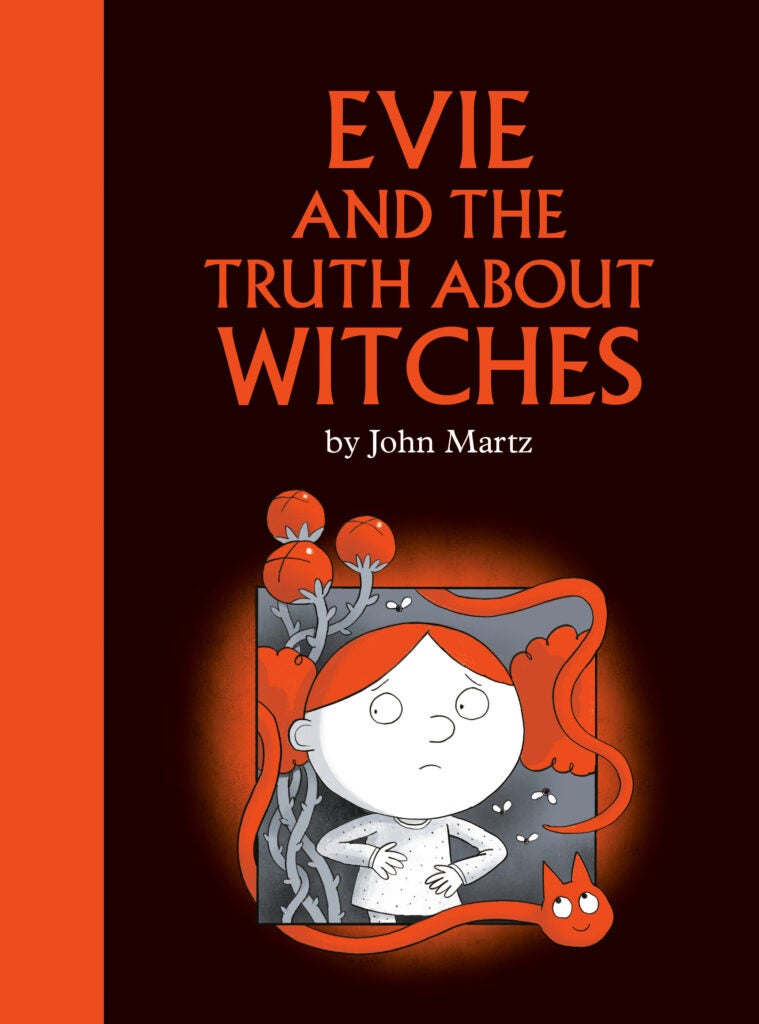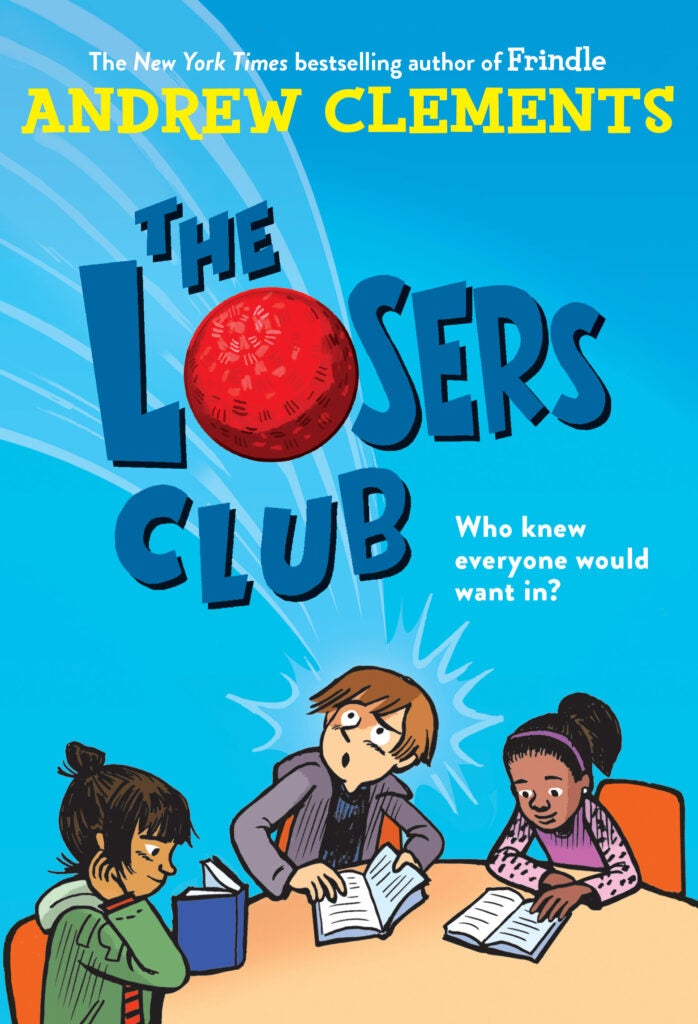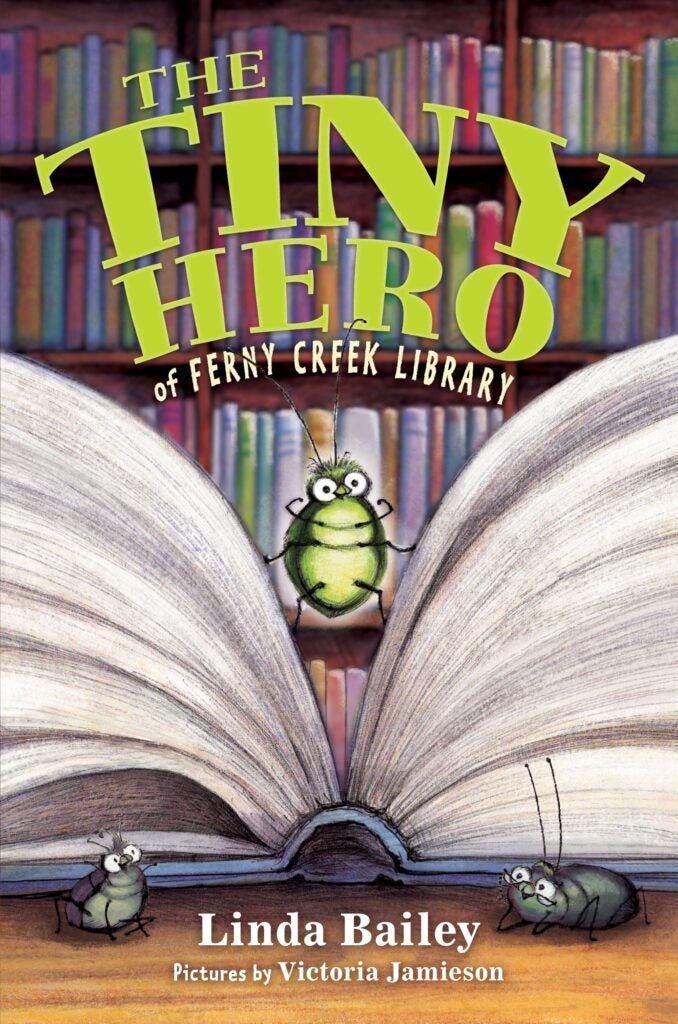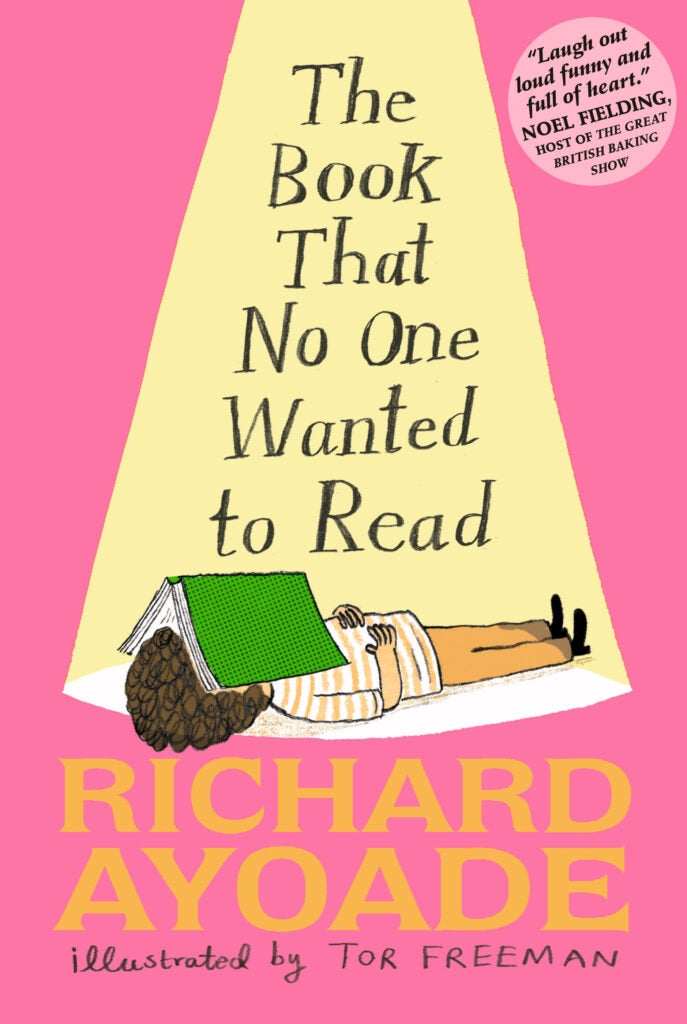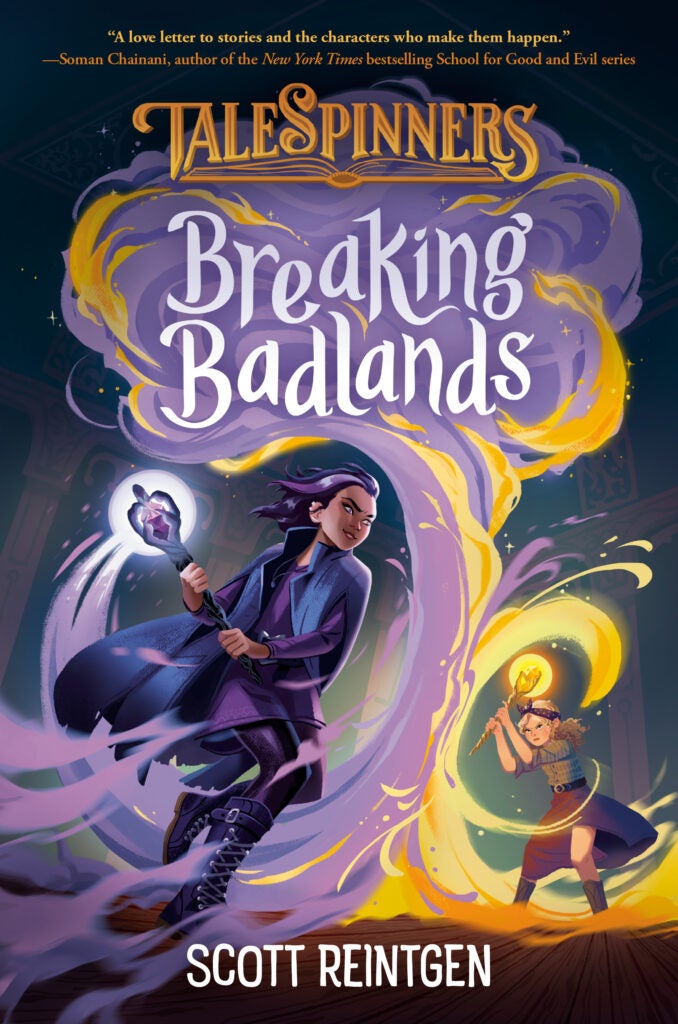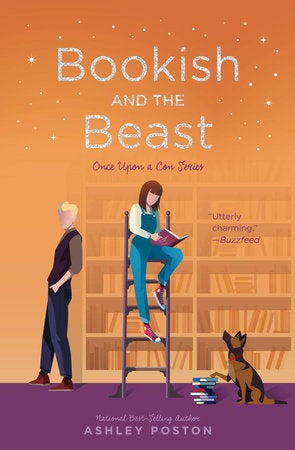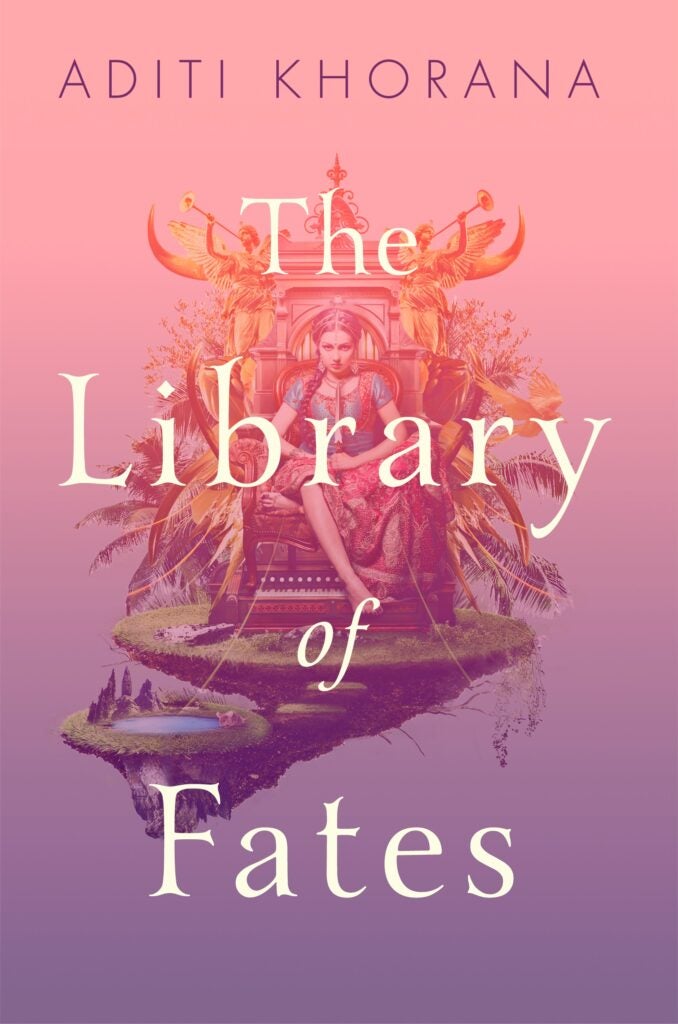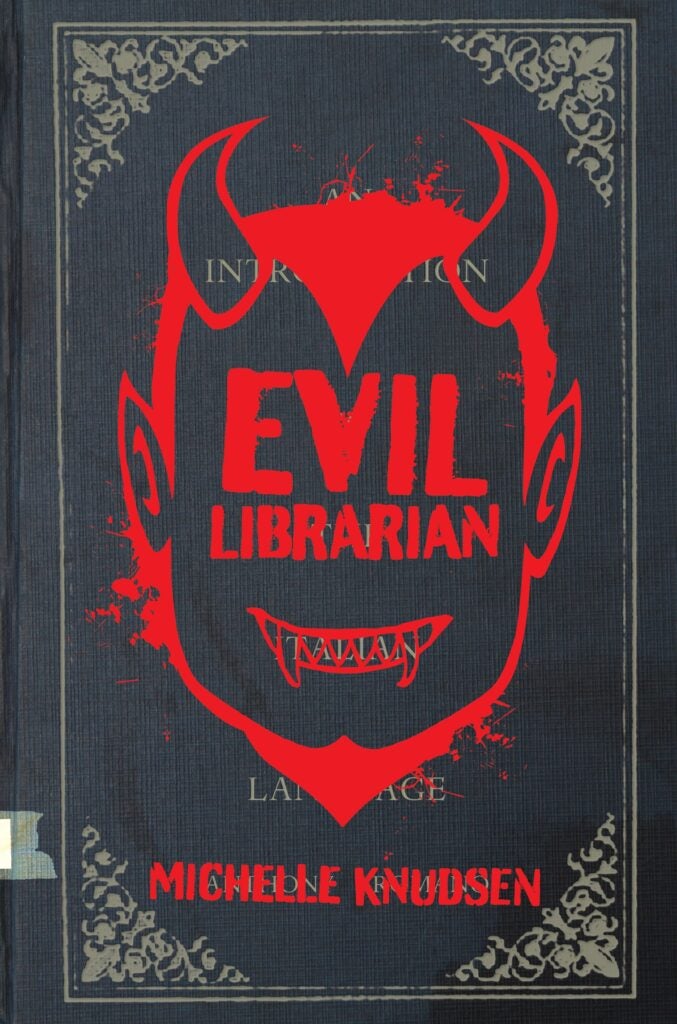Hello, and thanks for joining us at Tundra Telegram, the column where we divine the subjects bom-barding readers, then spell out some lawfully good books to read.
Tomorrow, the long-anticipated movie Dungeons & Dragons: Honor Among Thieves will grace screens across North America. Starring Chris Pine, Michelle Rodriguez, Regé-Jean Page (from Bridgerton!) and Hugh Grant, the movie has it all: magic, adventure, an Owlbear! And fans of the iconic roleplaying game have high hopes – or at least hopes this film will be a better viewing experience than the 2000 film starring Jeremy Irons, Thora Birch, and Marlon Wayans!
To celebrate, we’re recommending picture books, middle grade titles, and YA that are the closest possible things to Dungeons & Dragons (without actually being official Dungeons & Dragons books). What does that mean? Elements of medieval fantasy are a must. And some dragons and/or dungeons would certainly help. But any group of adventurers on a fantasy quest sounds good to us! Get ready to roll the twenty-sided dice and try something new with one of our book recommendations!
PICTURE BOOKS



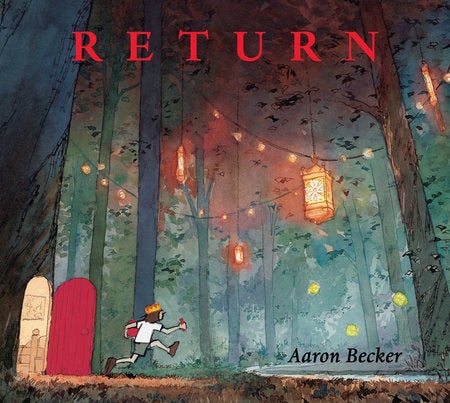
Jennifer L. and Matthew Holm‘s The Evil Princess vs. The Brave Knight has a title that’s essentially a campaign. As an added bonus, it plays against type as it asks questions like: is the evil princess, who casts devilish spells, really that bad? Is the knight who valiantly battles dragons and rescues cats as chivalrous as they seem? And D&D is all about playing different roles!
The books Journey, Quest, and Return by Aaron Becker are great picture book accompaniments to Dungeons & Dragons, as well. Journey tells the story of a lonely girl who draws a door on her bedroom wall that takes her to a magical world where wonder and danger abound. Quest follows two kids who follow a misplaced king through an enchanted door into a fantastical adventure, and Return sends that girl back to a magic realm one final time. The three books are completely wordless, which fits well, as D&D encourages you to choose your own adventure.



You don’t need a Monster Manual to tell you that Dungeons & Dragons features a whole host of mythical creatures. That’s why If I Had a Gryphon by Vikki VanSickle and Cale Atkinson is a perfect recommendation, as it features everything from unicorns to hippogriffs and kelpies and the very funny and unforeseen drawbacks of having magical animals as a pet.
Forget Dungeons & Dragons; how about Jockeys & Dragons? Attack of the Underwear Dragon, written by Scott Rothman and Pete Oswald, follows Cole, the brave assistant to the great knight Sir Percival, who must face a terrifying Underwear Dragon on his own. The sequel, Return of the Underwear Dragon, reveals Cole and the Dragon’s conflict in the first book resulted from – spoiler alert – the Dragon’s inability to read signs. The second book chronicles young Cole’s attempt to teach his scaly friend to read – just like in D&D, the possibilities are as endless as your imagination.
CHAPTER BOOKS & MIDDLE GRADE
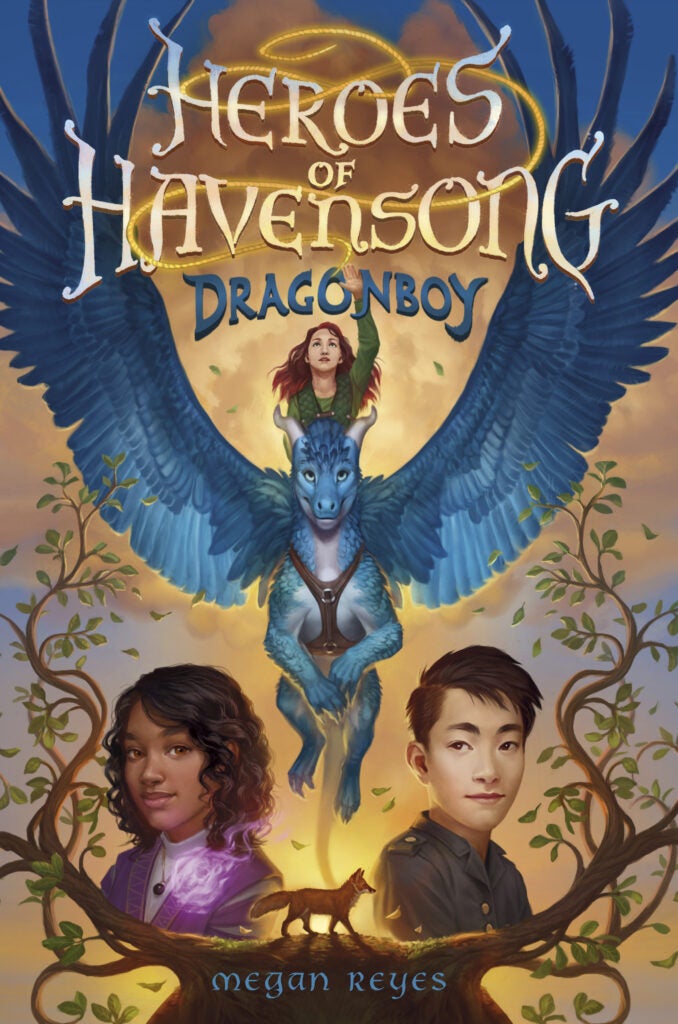

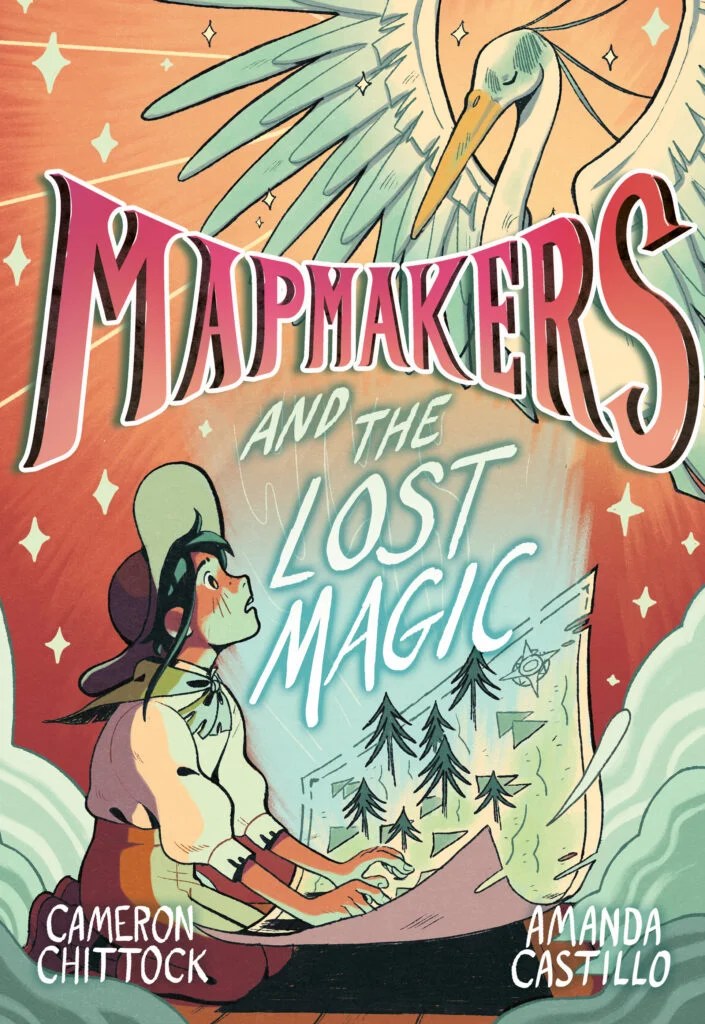

One of the closest analogs to Dungeons & Dragons is Heroes of Havensong: Dragonboy by Megan Reyes. Four unlikely heroes – a boy-turned-dragon, his reluctant dragon rider, a runaway witch, and a young soldier – must save their world, and magic itself, from being destroyed? With Reyes as our DM, it sounds like a good time, with more campaigns adventures to come.
While the fantasy realms in D&D tend toward the European-inspired, Christina Soontornvat‘s Thai-inspired The Last Mapmaker would make a perfect campaign. Sai is the young apprentice to a celebrated mapmaker who’s not who she pretends to be. (Must have incredible charisma stats!) Before long, she sets off on a sea voyage to the fabled Sunderlands – a land of dragons, dangers (maybe dungeons?), and riches beyond imagining.
Speaking of mapmakers, you may also want to seek out the graphic novel Mapmakers and the Lost Magic by Cameron Chittock and Amanda Castillo. A group of magical protectors long thought lost is rediscovered when young Alidade finds a secret door that leads to Blue, a magical creature called a memri who may help her protect the Valley from the merciless Night Coats! The second book, out this April, Mapmakers and the Enchanted Mountain, features Alidade and her new allies ready to restore the lost magic to the rest of the world outside the Valley.



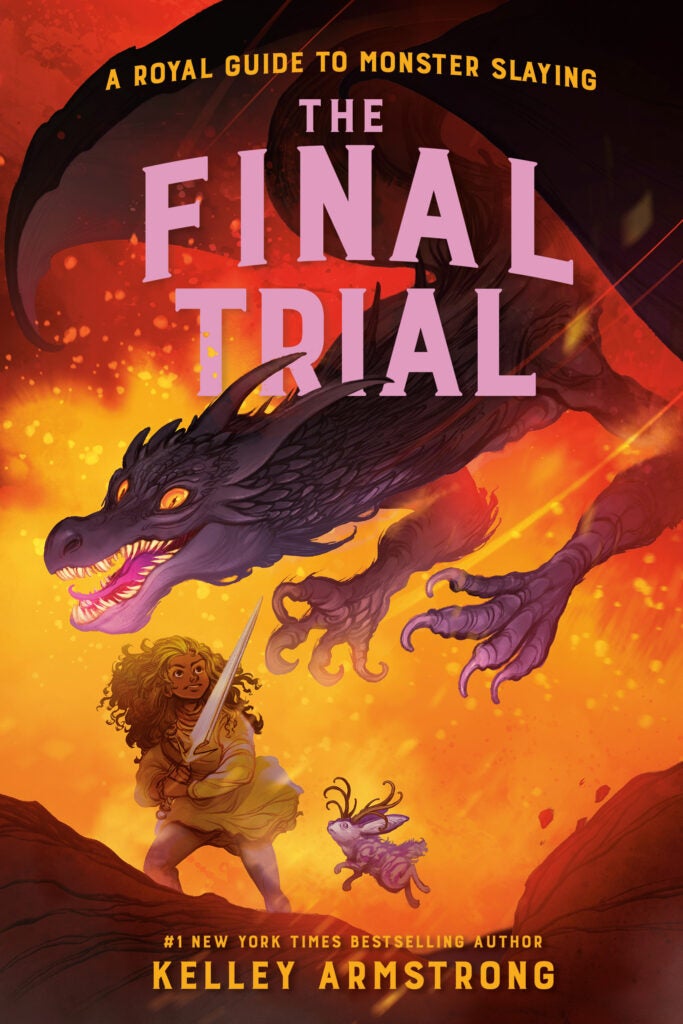
To capture the ragtag group of adventures on a mythical quest feel, you also need to investigate Kelley Armstrong‘s A Royal Guide to Monster Slaying. Over four books, ambitious monster hunter Rowan, her twin brother Rhydd, and a growing number of friends and fantastical beasts, fight to protect their homeland – and sometimes monsters – from untold danger.



Similarly, the heavily illustrated Max & the Midknights series by Lincoln Peirce (of Big Nate fame) features a girl who dreams of being a knight. And joined by a band of brave companions, she rescues hostages, battles trolls, and even faces an evil twin in misadventures a bit more comical than the average D&D campaign.
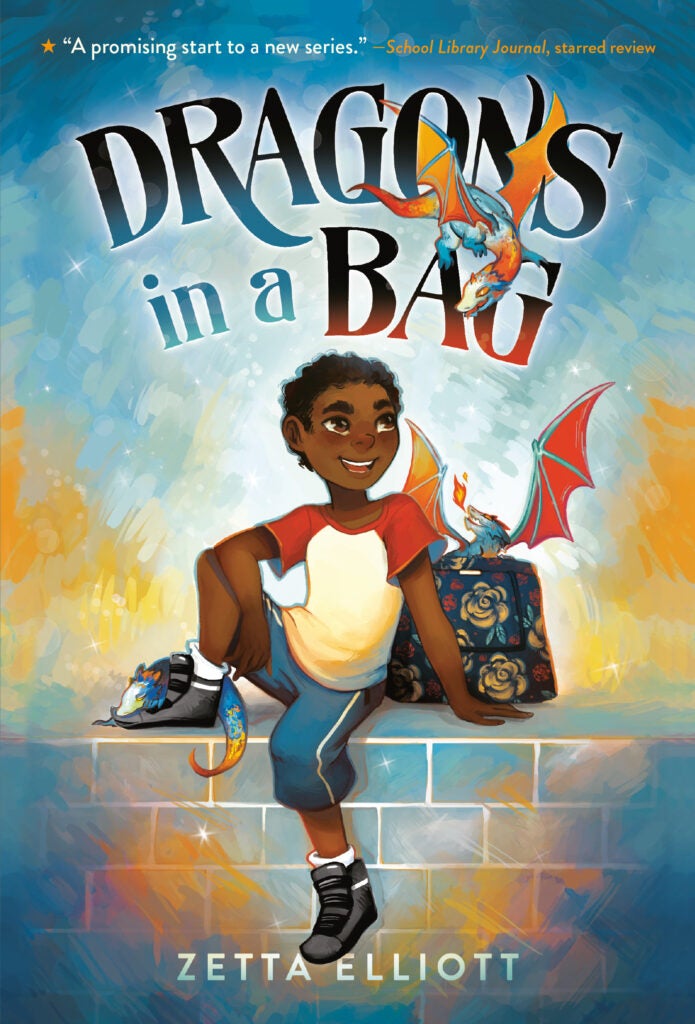

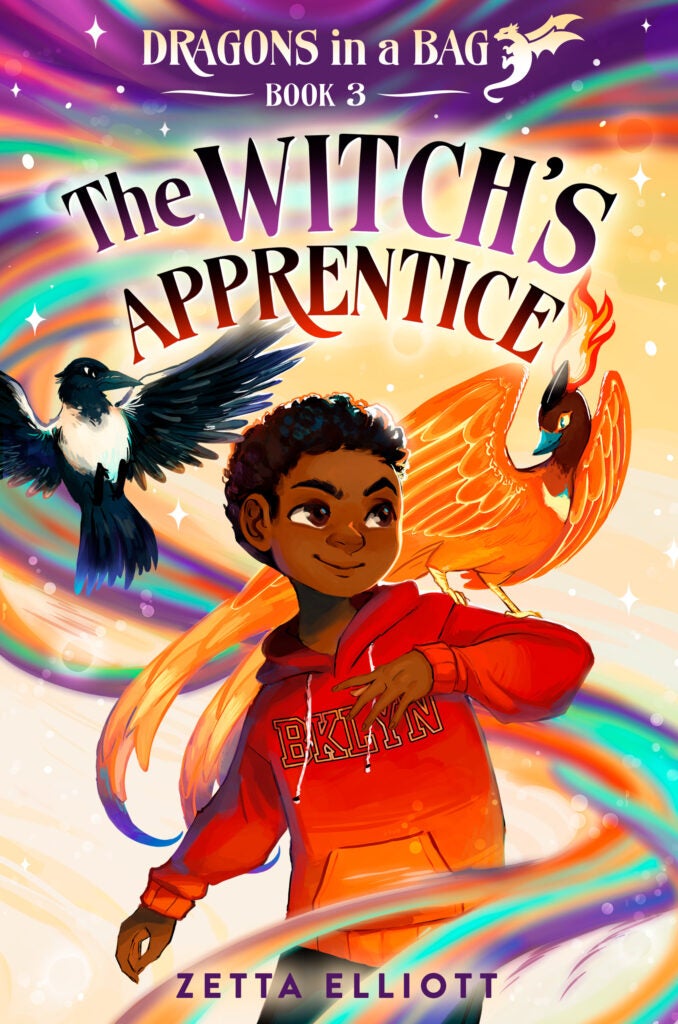
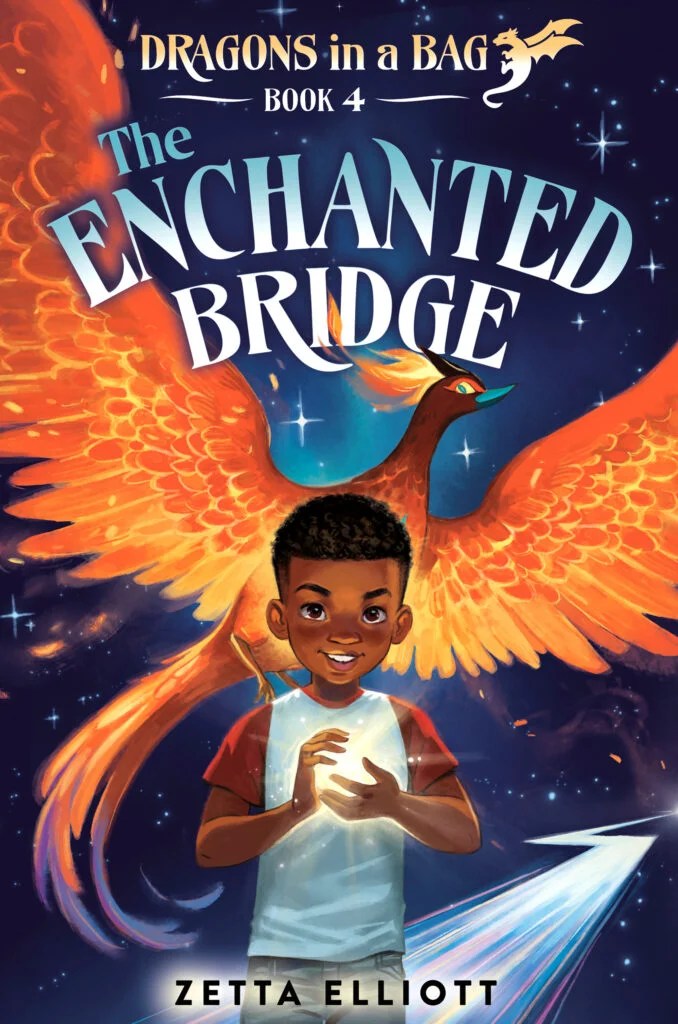
Not a lot of dungeons to be found in modern-day Brooklyn, but there are plenty of winged serpents in Zetta Elliott‘s winning Dragons in a Bag series. The four books follow young Jax and friends Vikram, Kavita, Kenny, and more as they discover dragons and magic are real, and travel back and forth between a magical realm and a slightly-less-magical borough of New York City.
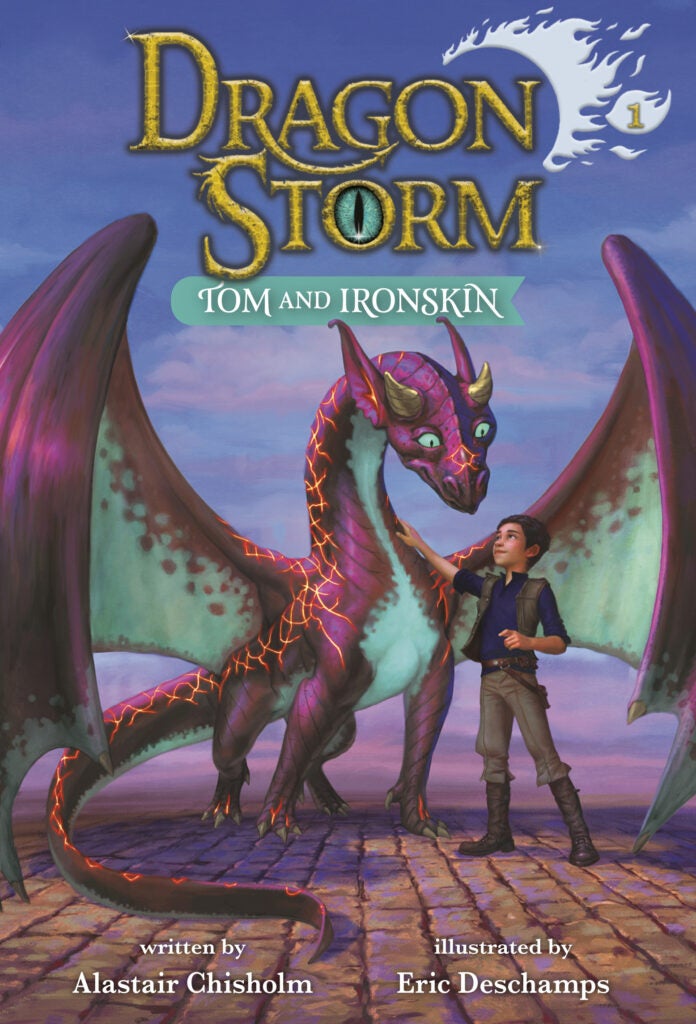



Also heavy on the dragons and not so much the dungeons is the Dragon Storm series, written by Alistair Chisholm and illustrated by Eric Deschamps. Each book is about a youth inducted into a secret league of dragonseers, The Guild, where they train to bond with their dragons and summon their power. Just imagine the party if those dragonseers joined together in a quest!
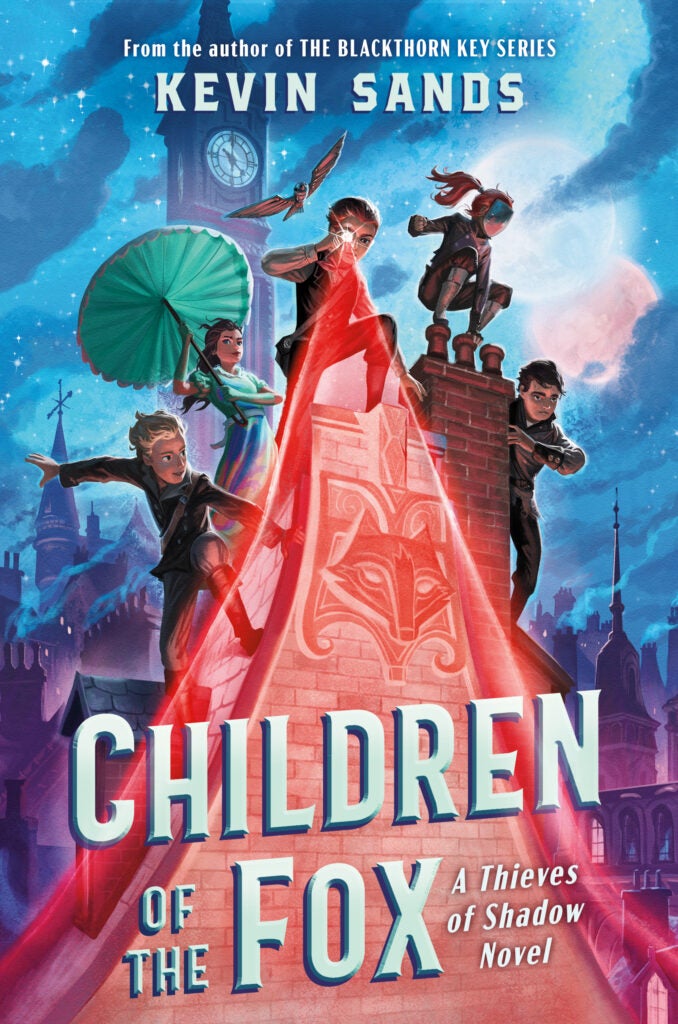
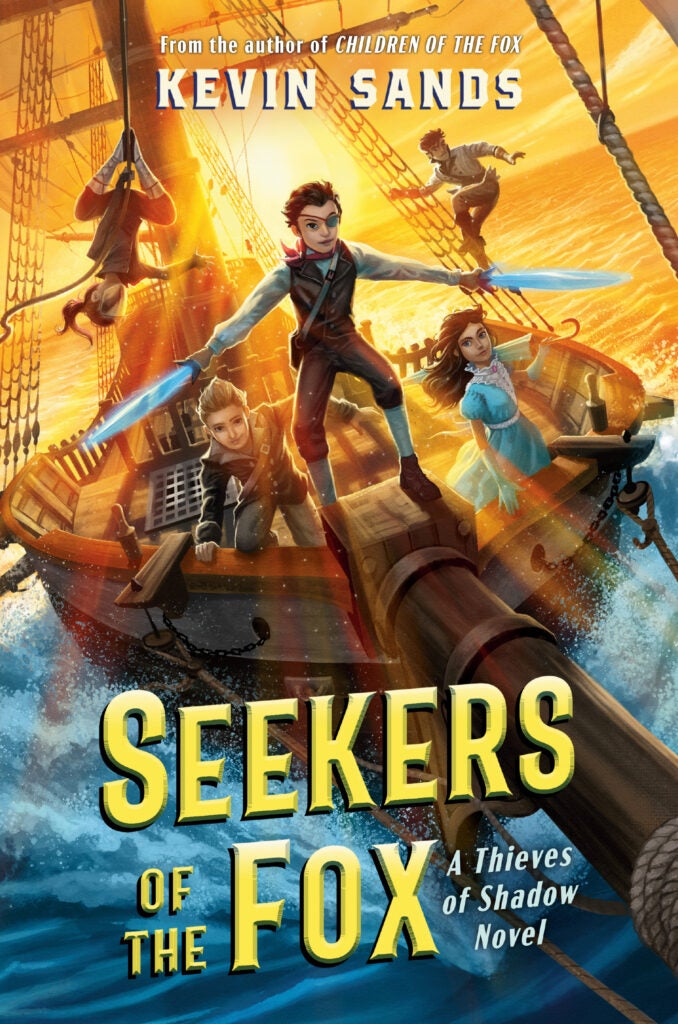

The subtitle of the Dungeons & Dragons movie is Honor Among Thieves, and we can think of no better comparison than the thrilling Thieves of Shadow series by Kevin Sands. Starting with Children of the Fox, the books feature a motley band of five young thieves, each with their own special skill, hired to steal a guarded treasure from the most powerful sorcerer in the city. From that initial heist, the five criminal friends learn over and over again that you do not mess with magic!


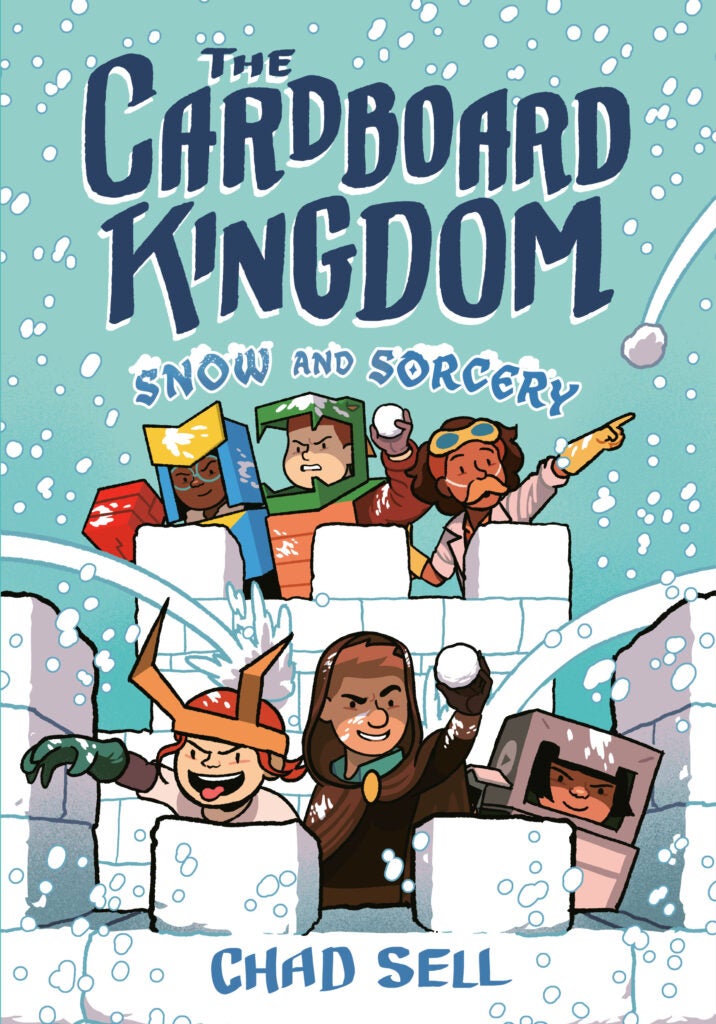
A book series that reflect the fun of roleplaying with a bunch of your friends is Chad Sell‘s The Cardboard Kingdom graphic novels. A bunch of neighborhood pals transform ordinary cardboard into fantastical homemade costumes and environments as they explore conflicts with friends, family, and more in their ongoing games of imagination (which are more like LARPing than D&D, granted). A third book, Snow and Sorcery, will be in stores this fall!

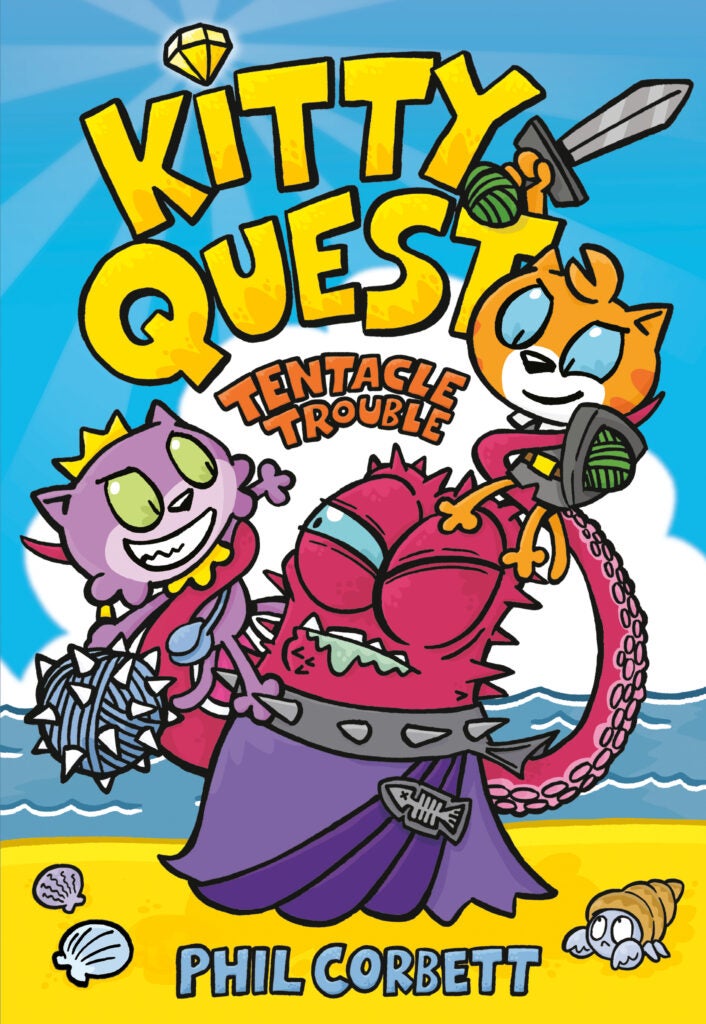
And if that’s not an adorable enough adventure for you, there’s Kitty Quest and Kitty Quest: Tentacle Trouble by Phil Corbett. Yes, it’s the fun, swashbuckling adventure filled with monsters and wizards you expect from a graphic novel fantasy, but our two adventurers – Woolfrik and Perigold – are two bumbling kittens who don’t know as much about monster hunting as they should!
YOUNG ADULT
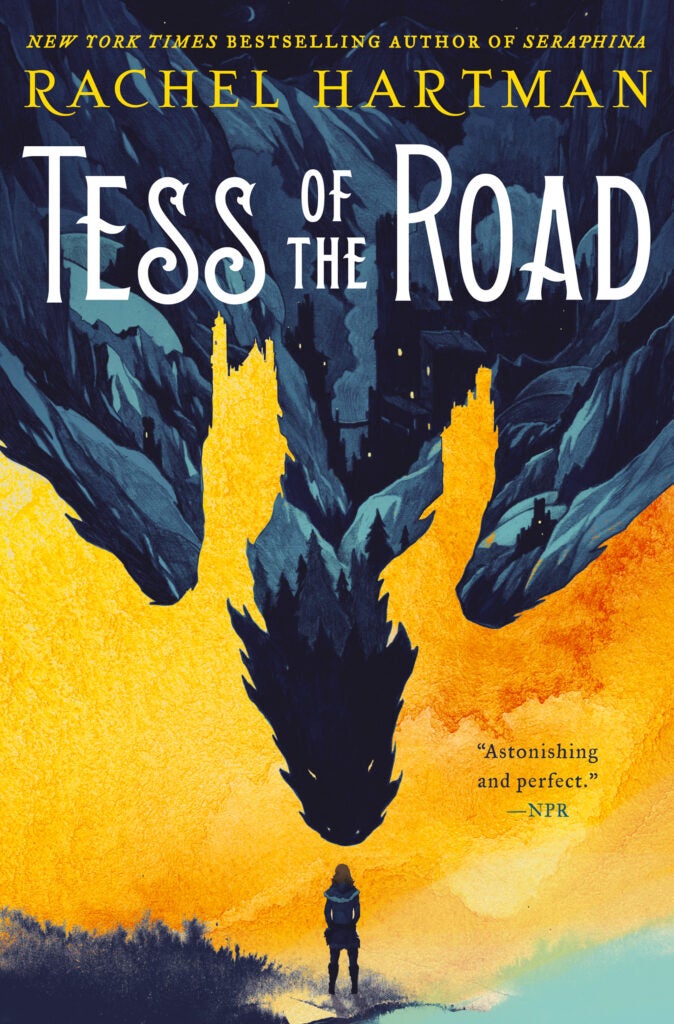
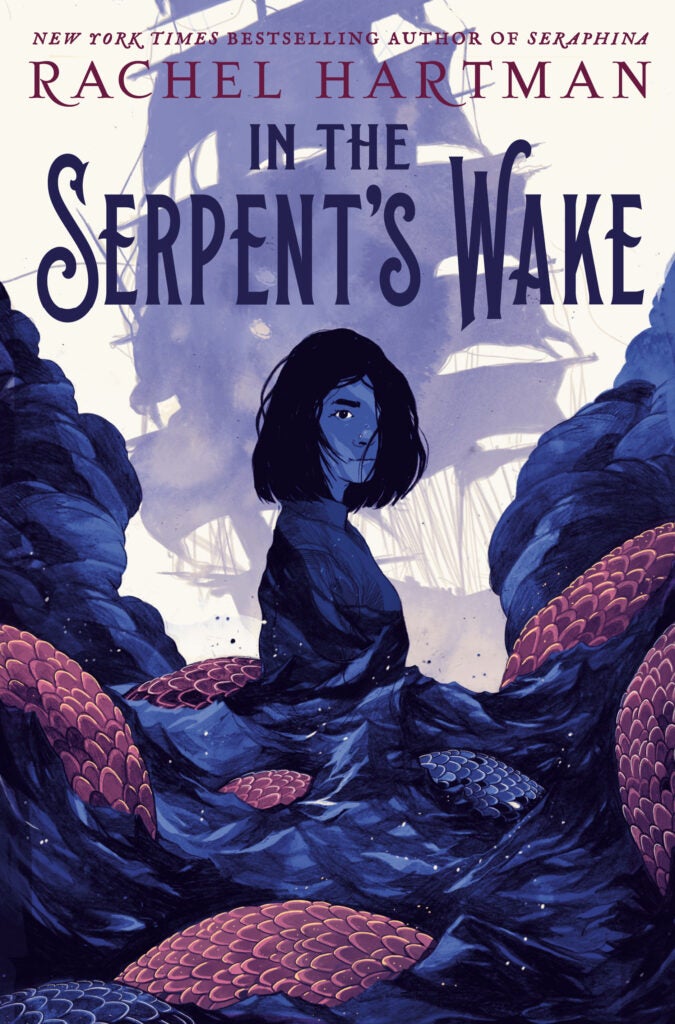

If Dungeons & Dragons is about one thing, it’s about epic journeys where friends and allies are made along the way and in Rachel Hartman‘s Tess of the Road (set in the same world as her Seraphina series), Tess – headed for a nunnery against her will – sets out on an uncertain journey across the Southlands, disguised as a boy. She runs into an old friend who is a quigutl – a subspecies of dragon – and they travel the road, making many memorable stops (and friends). The follow up, In the Serpent’s Wake, sees Tess on a similar quest on the sea, to find the last World Serpent.
The graphic novel Witchlight by Jessi Zabarsky takes the D&D tropes of magic and journey, but with a focus centred on queer women. Lelek is a witch who kidnaps a peasant girl Sanja (who is quite good at swordfighting). The duo grow more entangled and friendly as they travel together on a hunt for the missing half of Lelek’s soul – the source of her true magical abilities.
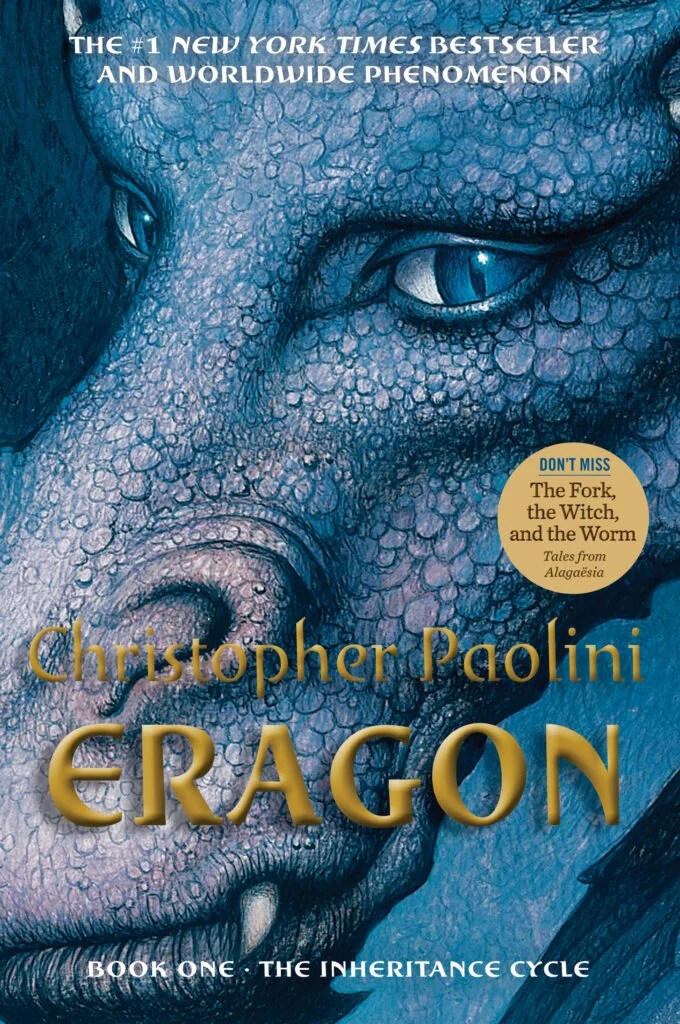

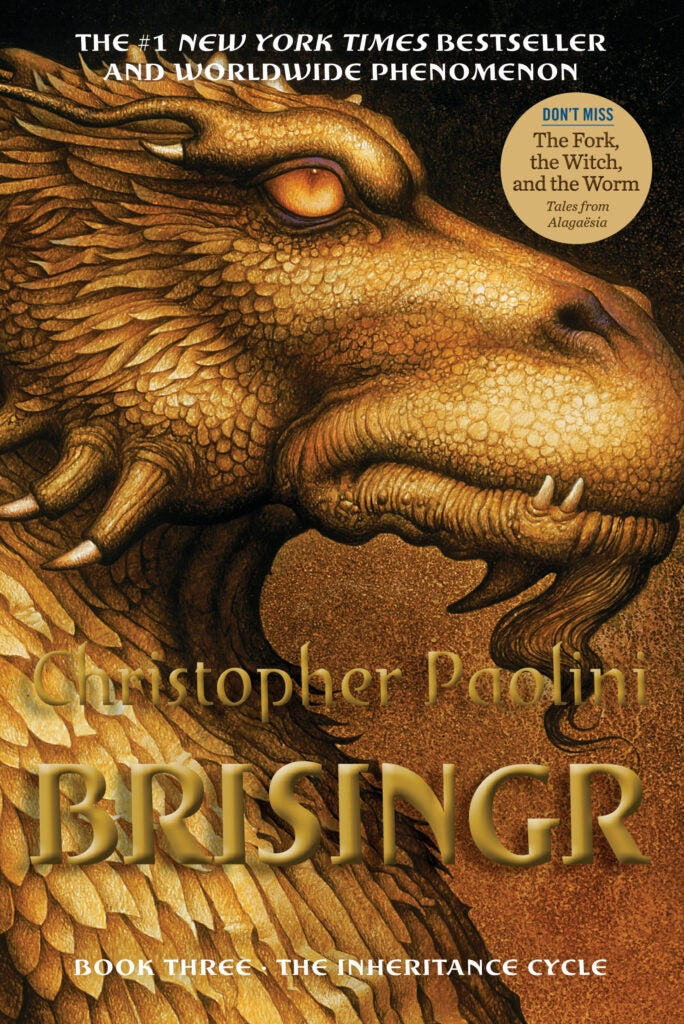

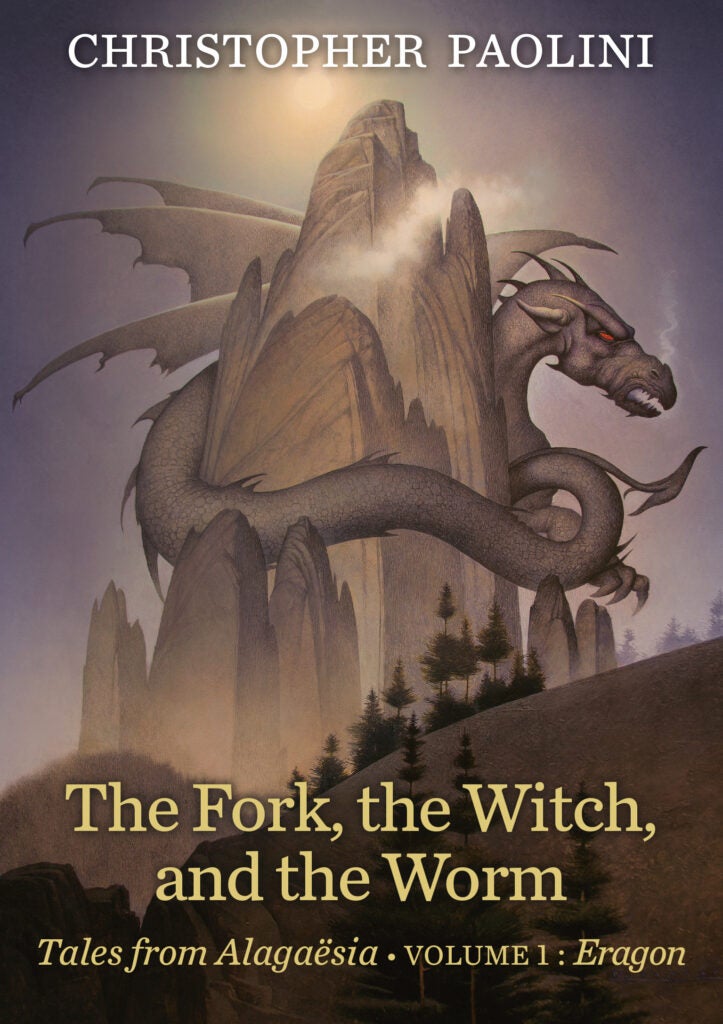
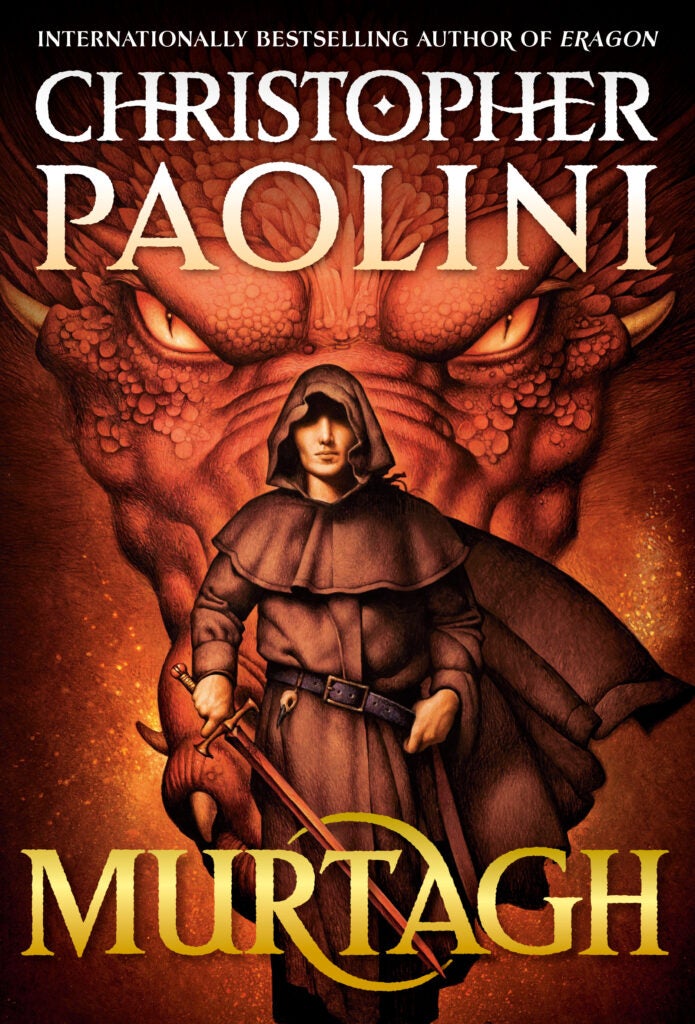
But there are few YA series more about dragons than Christopher Paolini‘s classic Inheritance Cycle series. First written when amateur swordsman Paolini was just a teen himself, the books follow poor farm boy Eragon who stumbles upon a dragon egg and – as you might expect – is soon swept into a world of magic, battle, and intrigue. And Paolini fans are in luck, as the author just announced a new book set in the world of Alagaësia, Murtagh, which sees the fan favorite dragon rider and his dragon Thorn in a quest to outwit a dangerous witch.
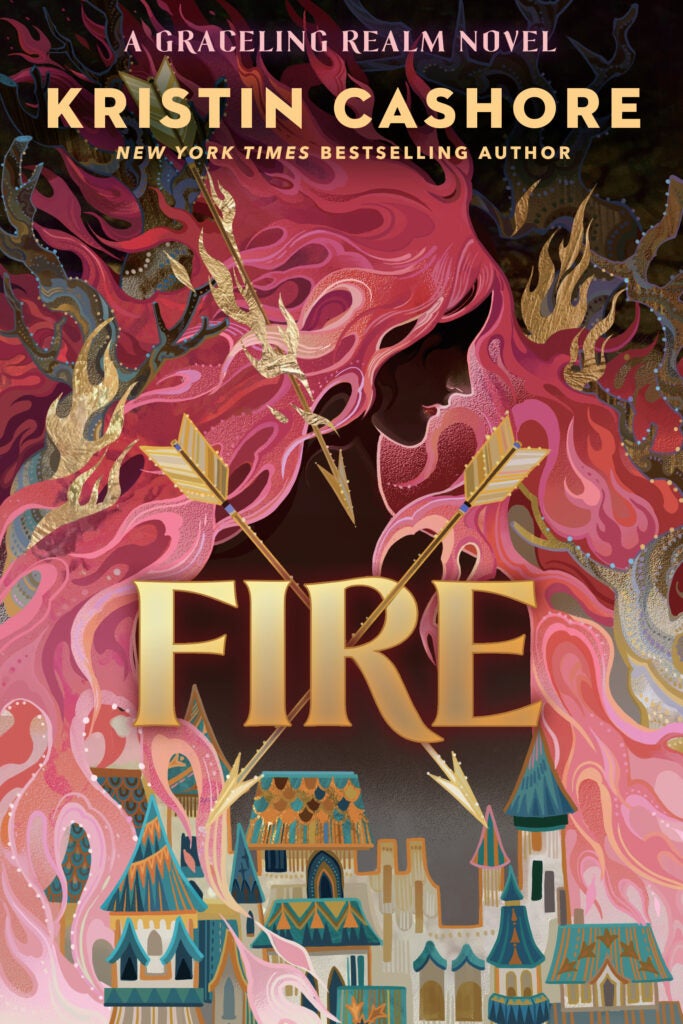
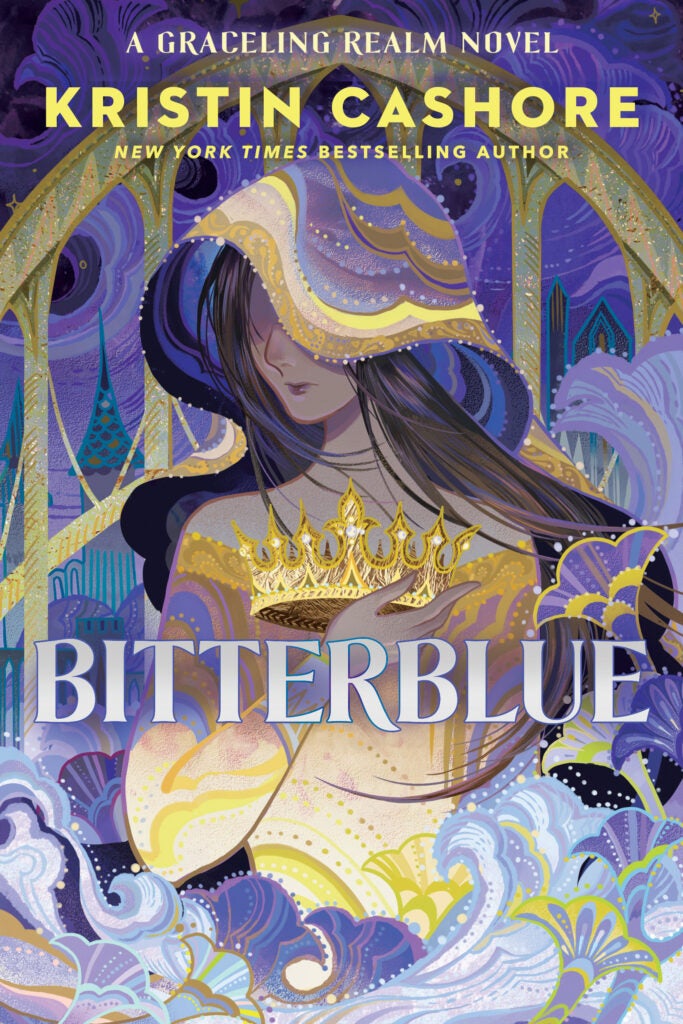


Kristin Cashore‘s Graceling Realm series is great as each book is set in the same shared magical world, but only loosely connected – with some characters appearing in more than one book, but books also taking place in different eras. So, whether you start with the story of Fire, a princess with mind-control powers in a kingdom on the brink of war, or the recent Seasparrow, which follows the (much later) Queen Bitterblue’s sister and spy on a sea quest, you still get a satisfying, self-contained fantasy epic.
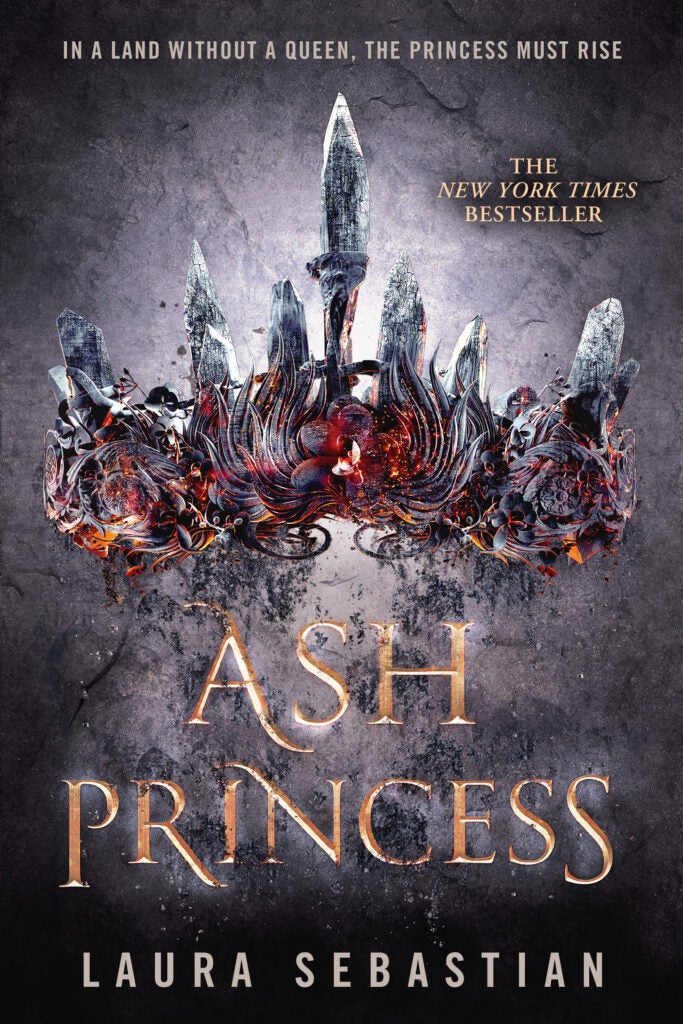


Over three pulse-pounding books, the Ash Princess series by Laura Sebastian chronicles the deposed princess Theodosia’s battle to raise an army and reclaim her kingdom from the murderous Kaiser (who killed her mother – this isn’t a spoiler; it’s literally on the jacket copy). Besides the trappings of medieval fantasy, what makes it a great D&D chaser is that Theodosia’s greatest weapon is – as it is with any D&D player – her mind.


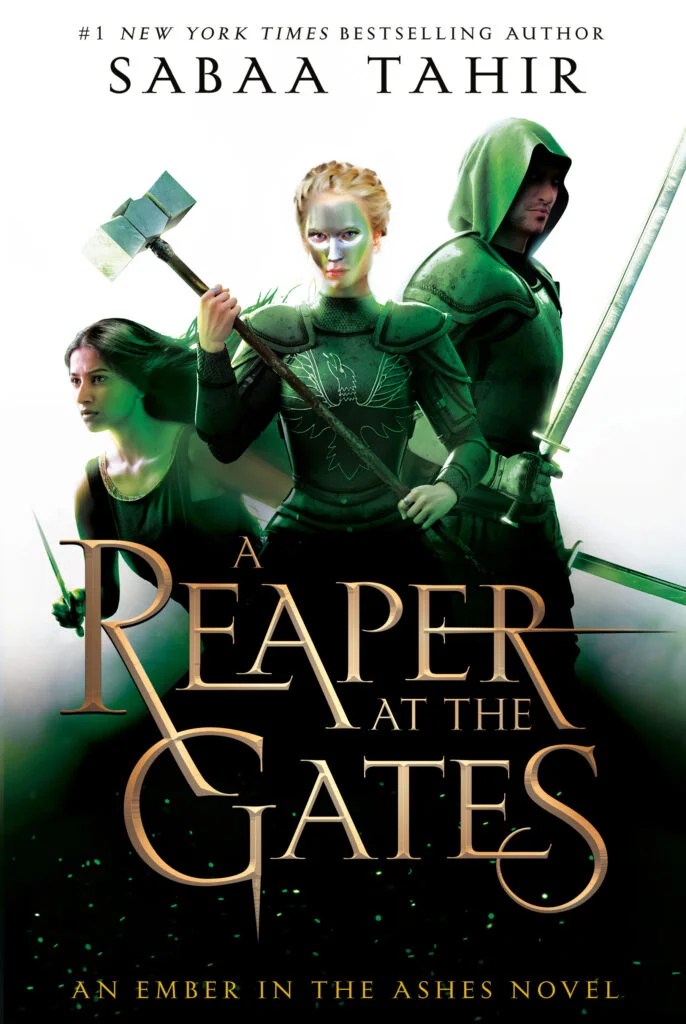

We’d be remiss if we didn’t also recommend what Buzzfeed called “one of the best fantasy series of the last decade”: Sabaa Tahir‘s An Ember in the Ashes. In four titles, readers follow unlikely allies – rebel spy Laia and soldier for the Martial Empire Elias – as they gather allies in their fight against tyranny and encounter magical jinn and deadly warriors. (The book covers even look like D&D art!)
Sally forth, fellow adventurers!
